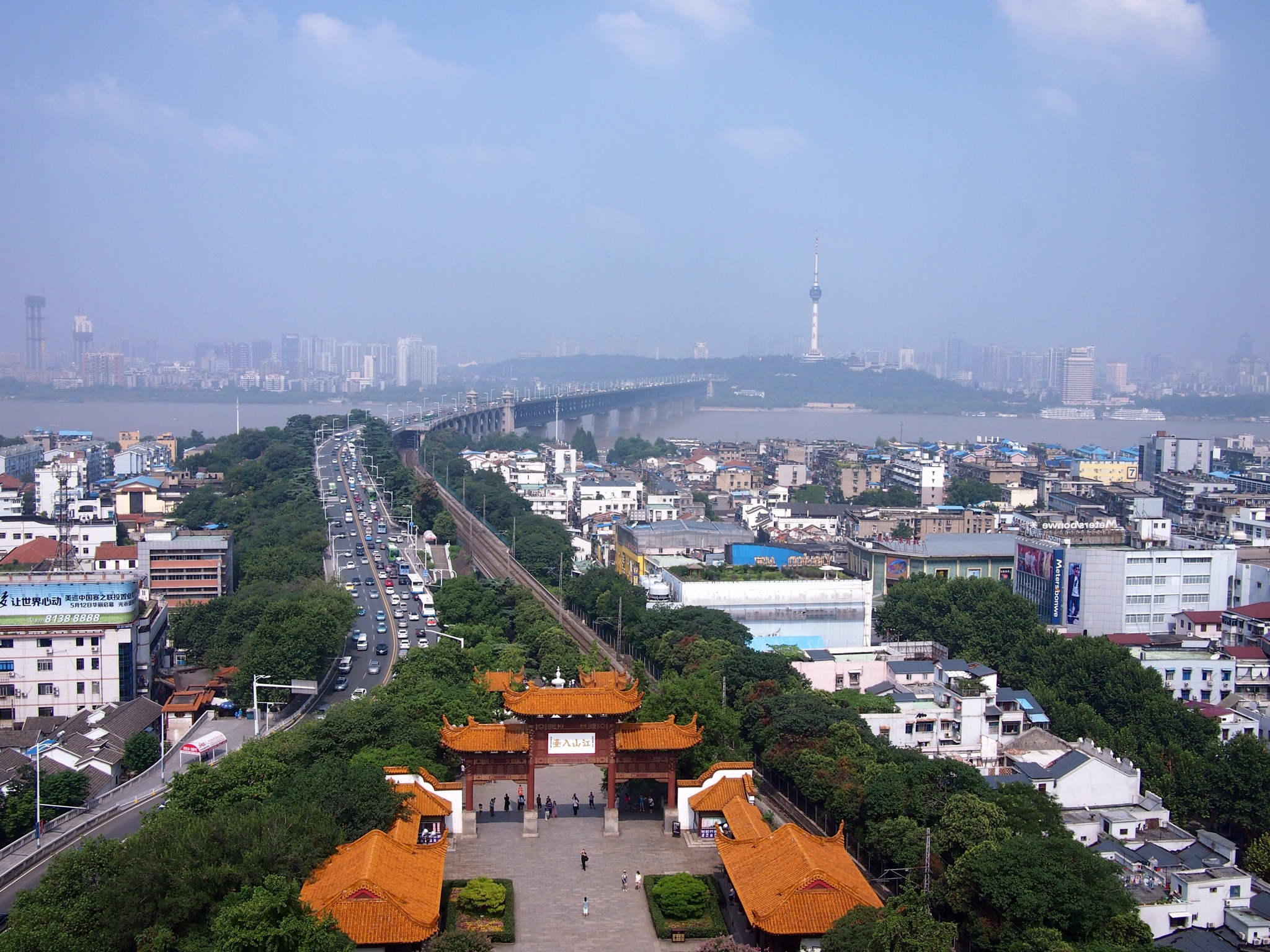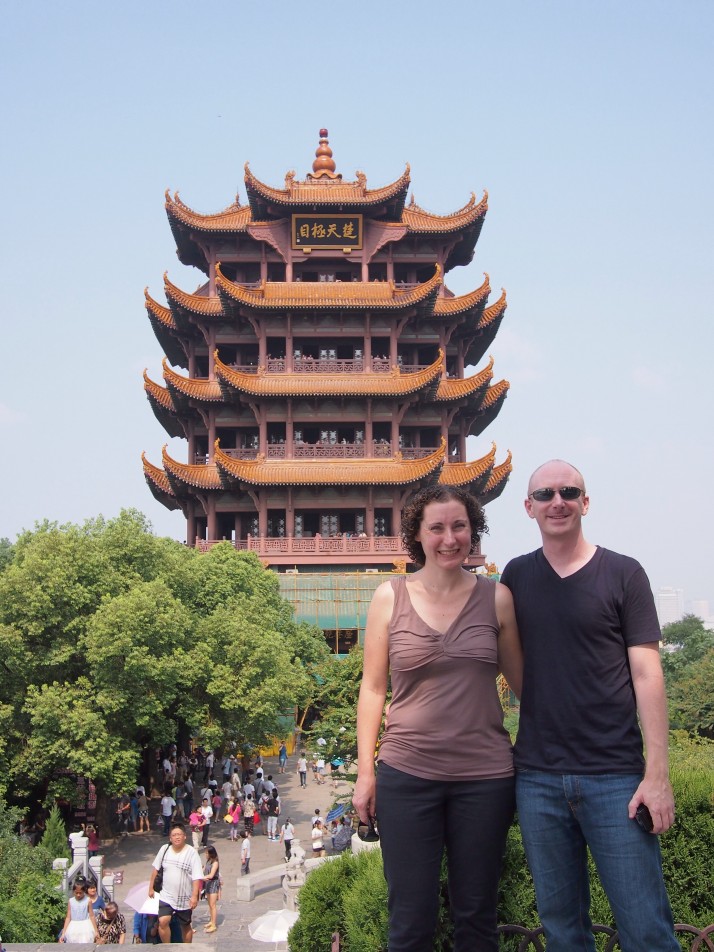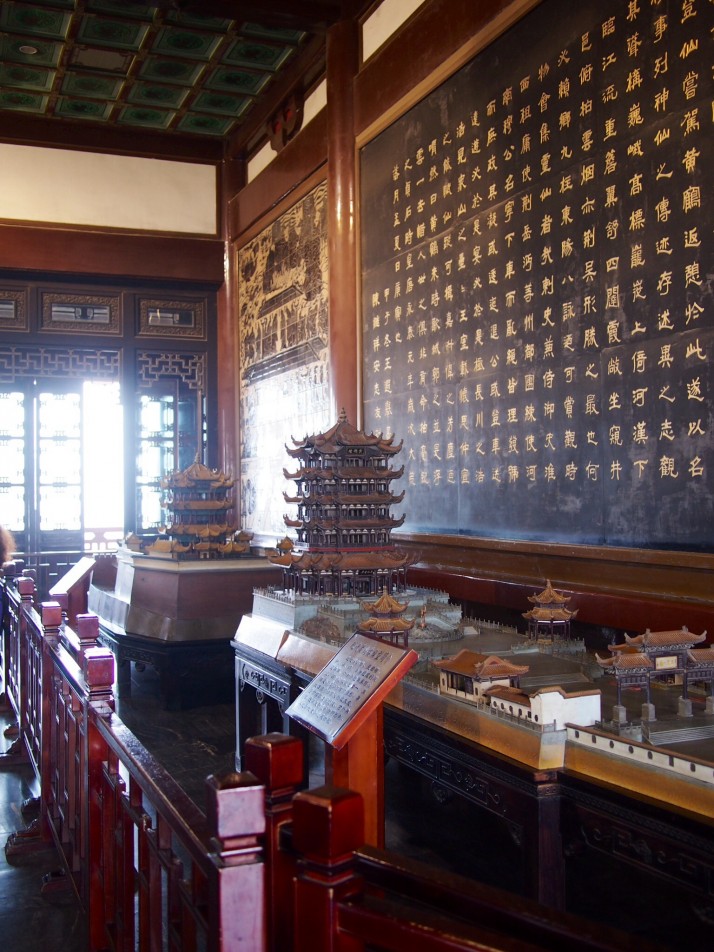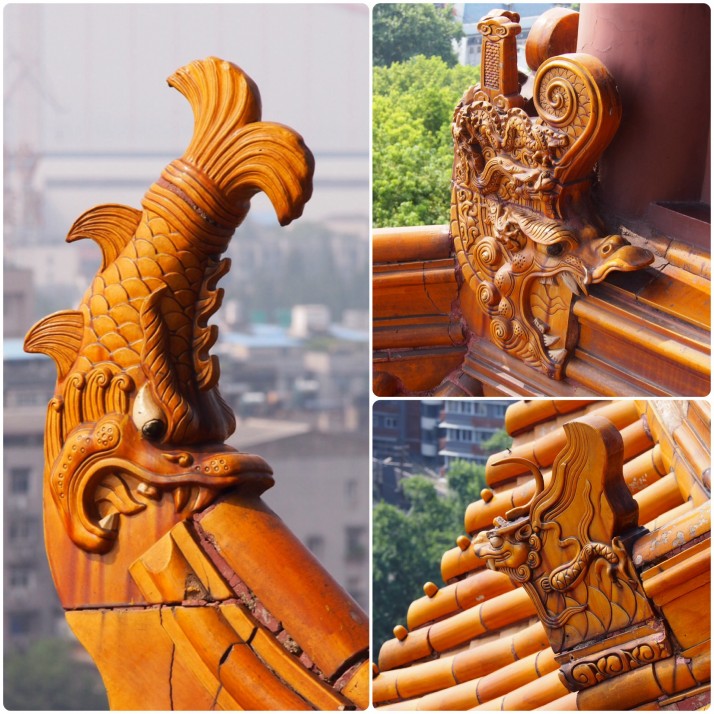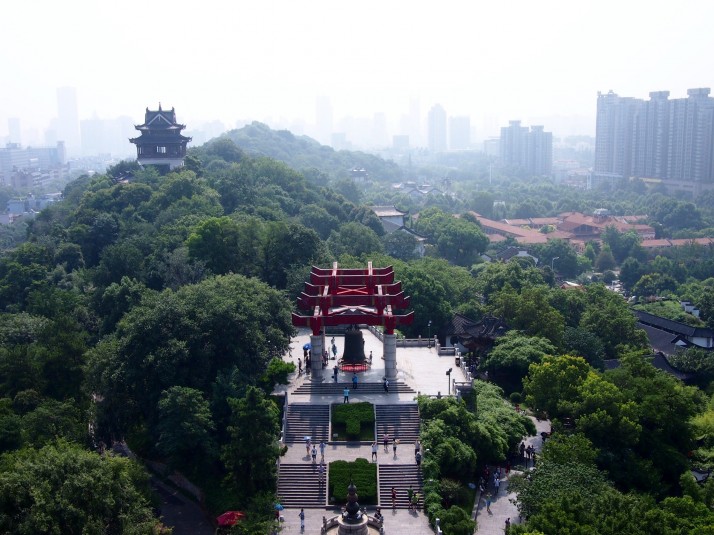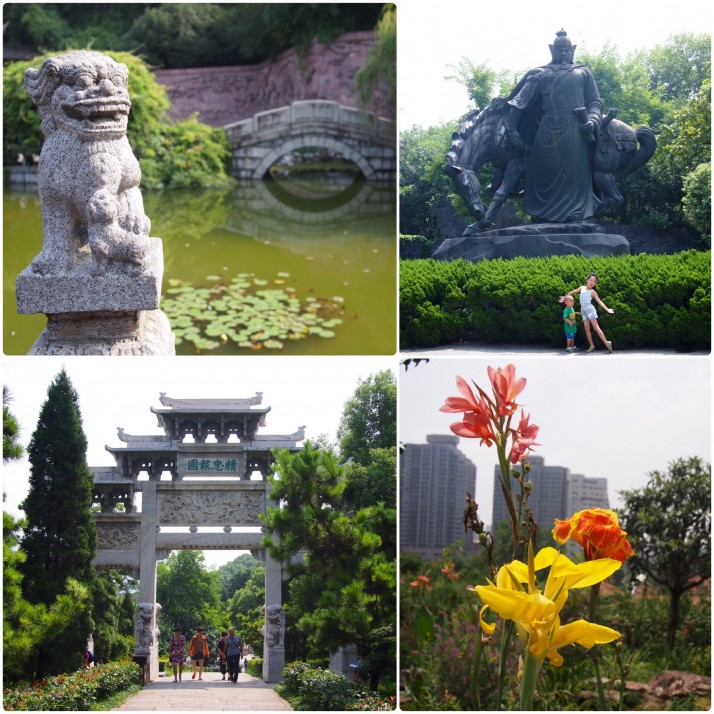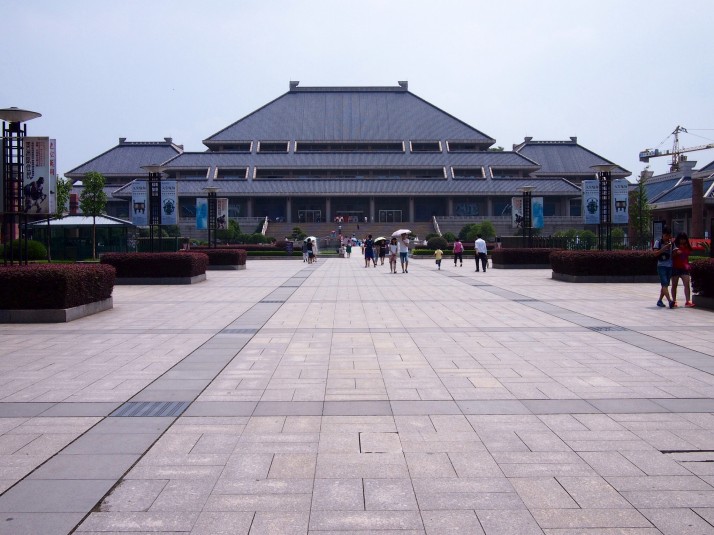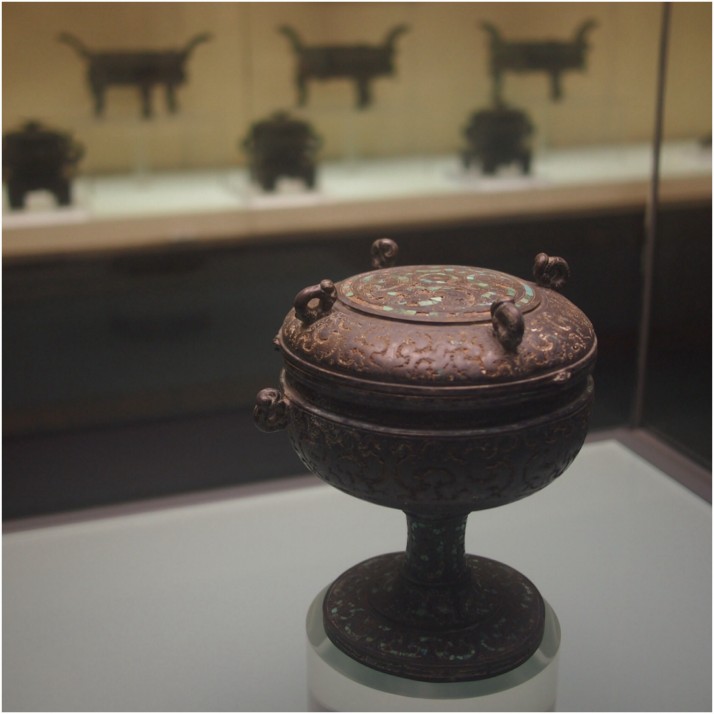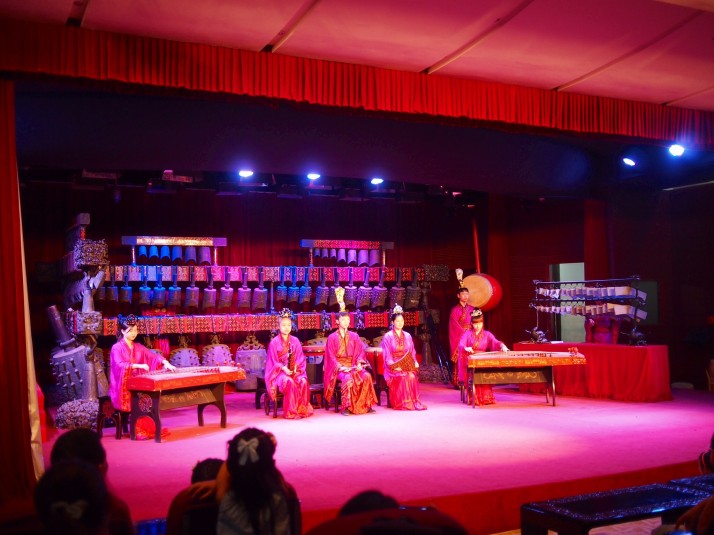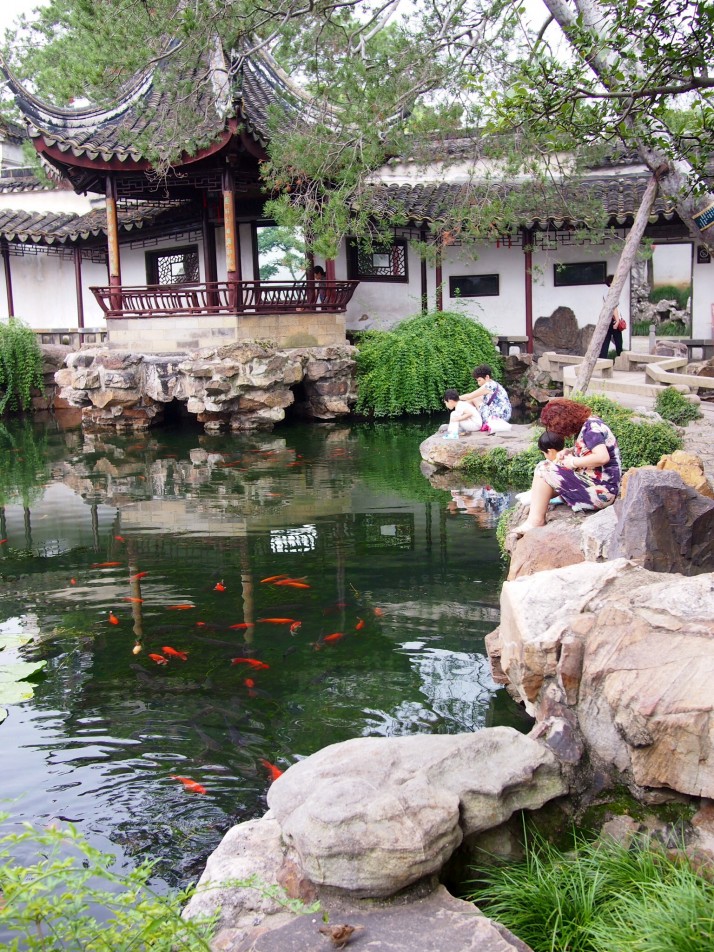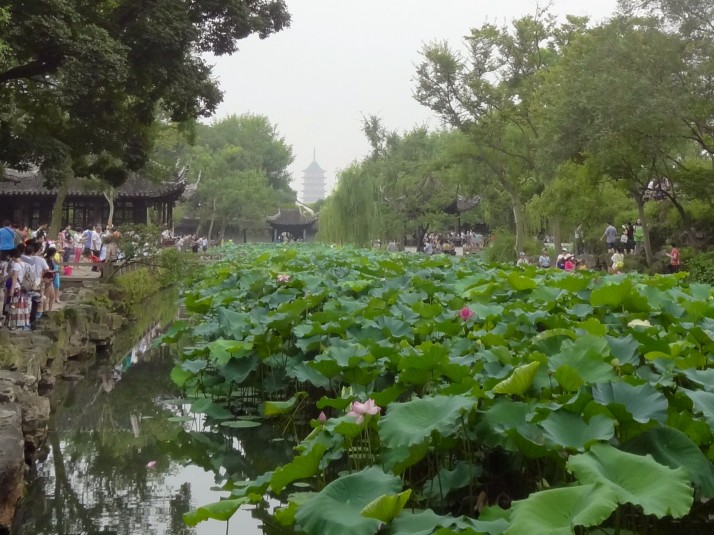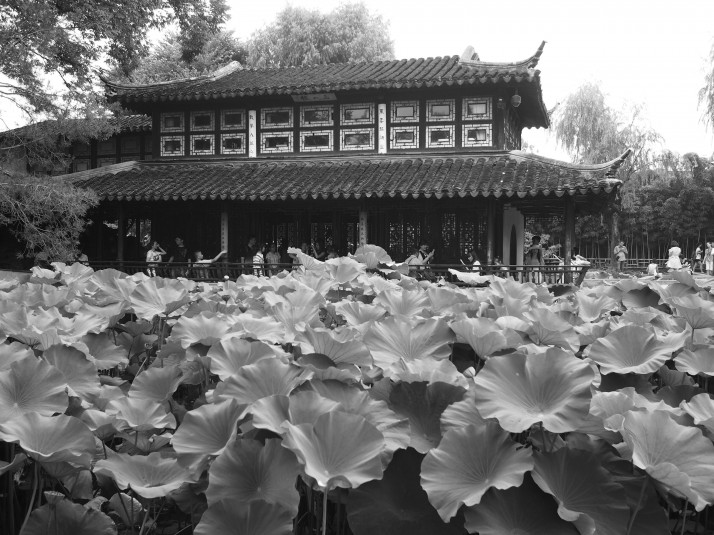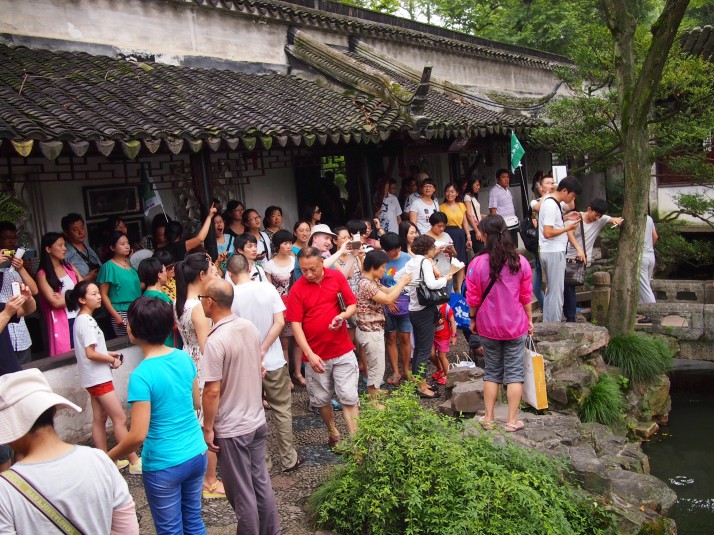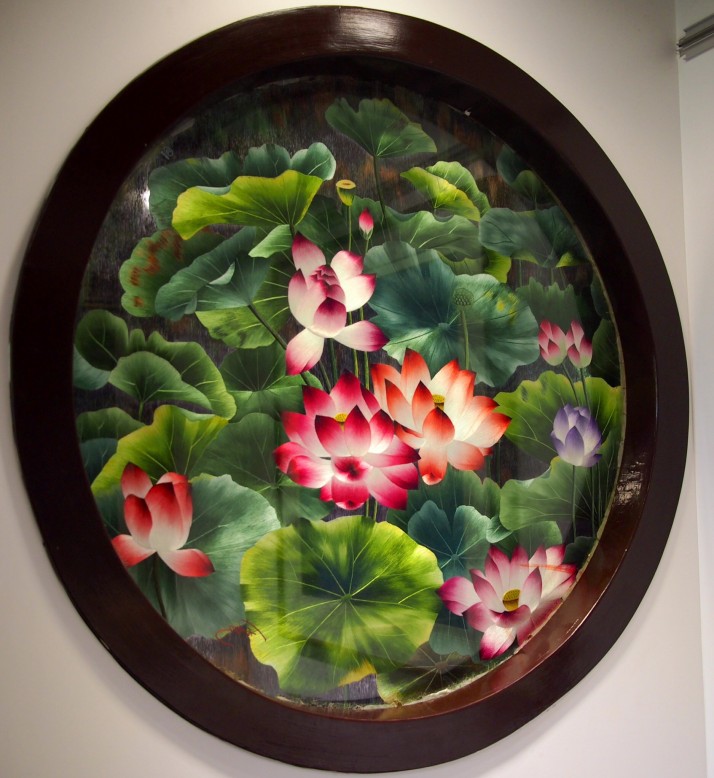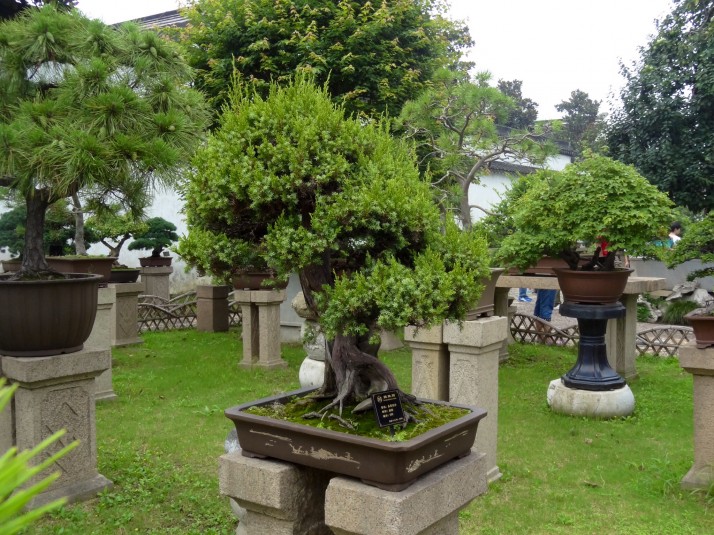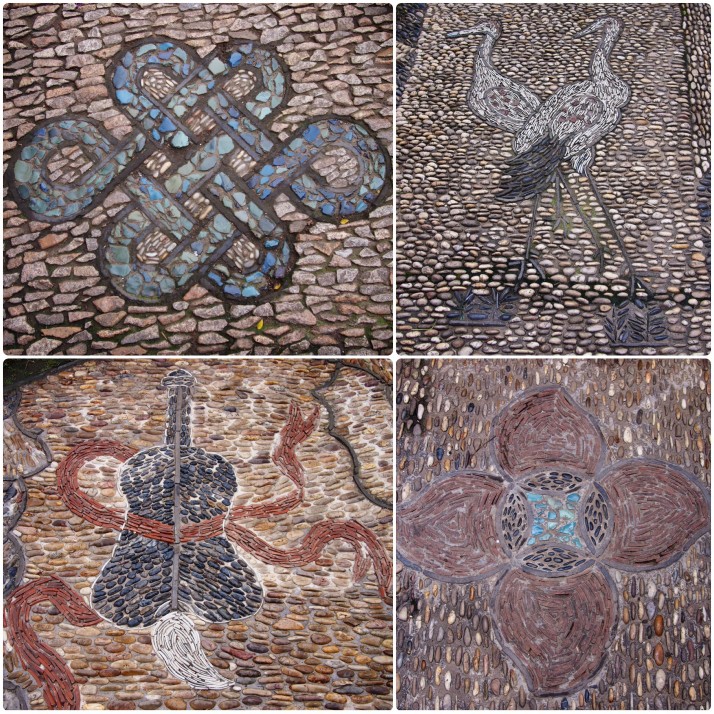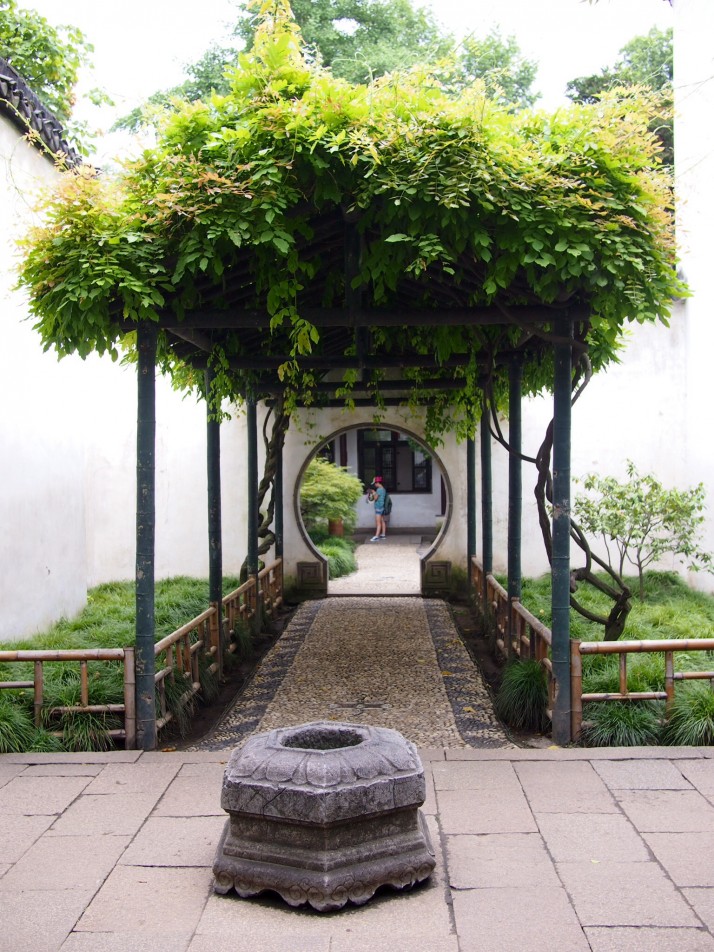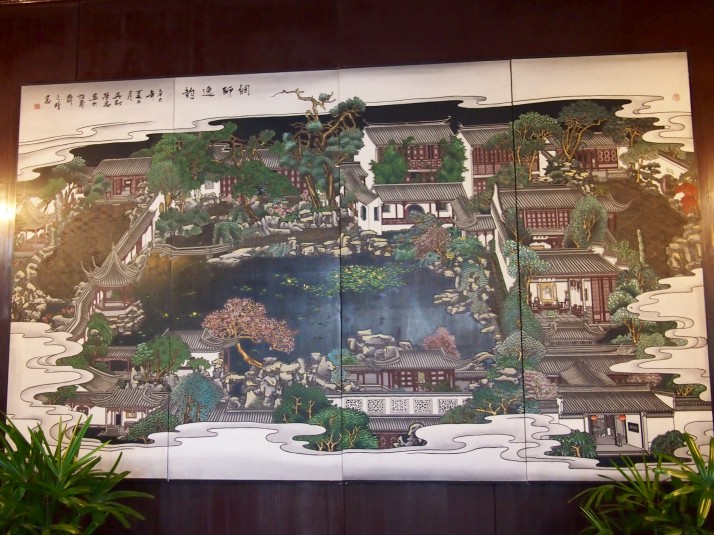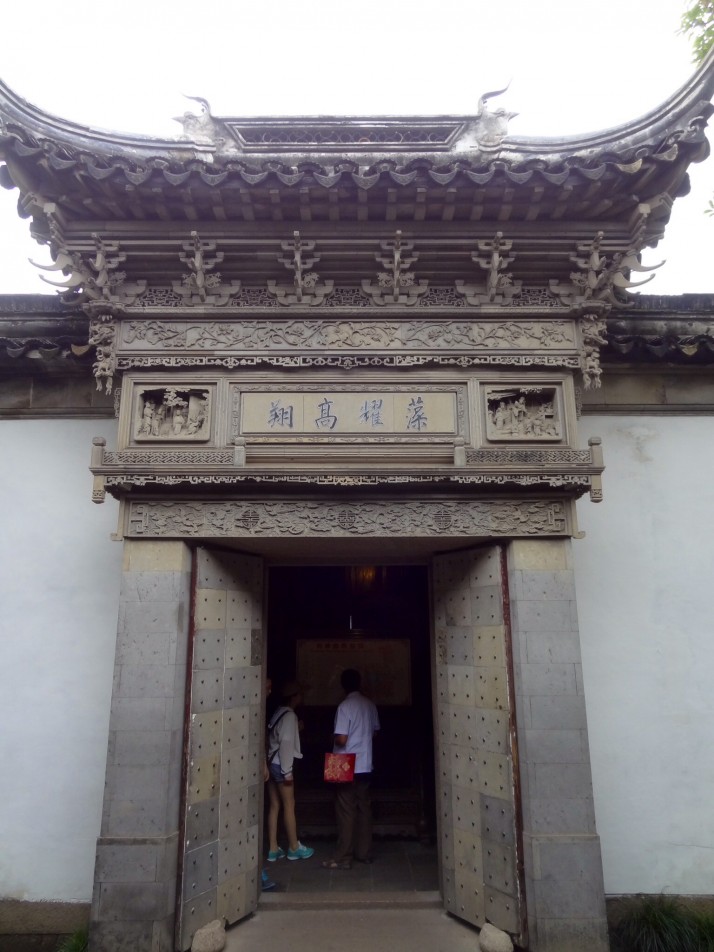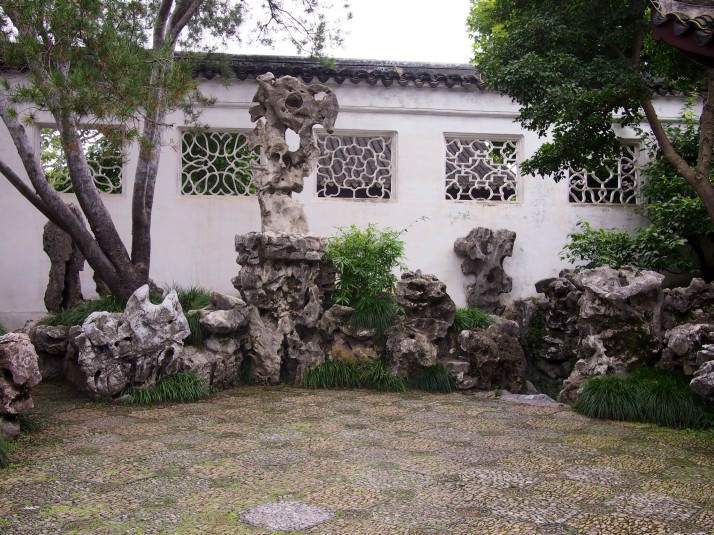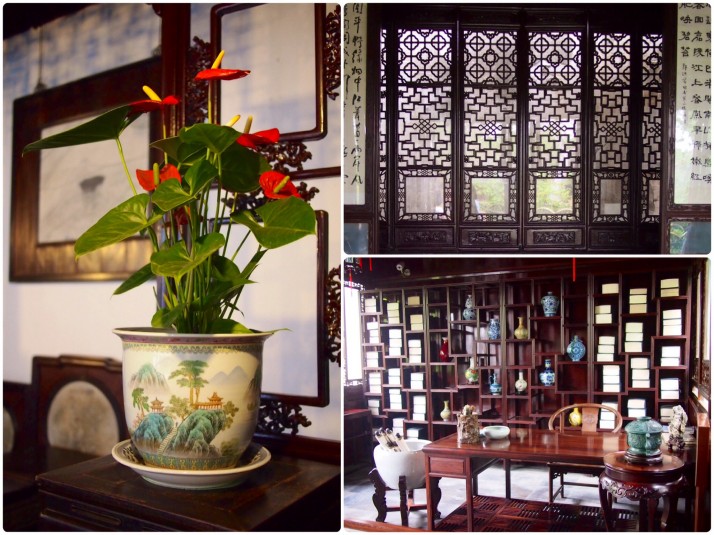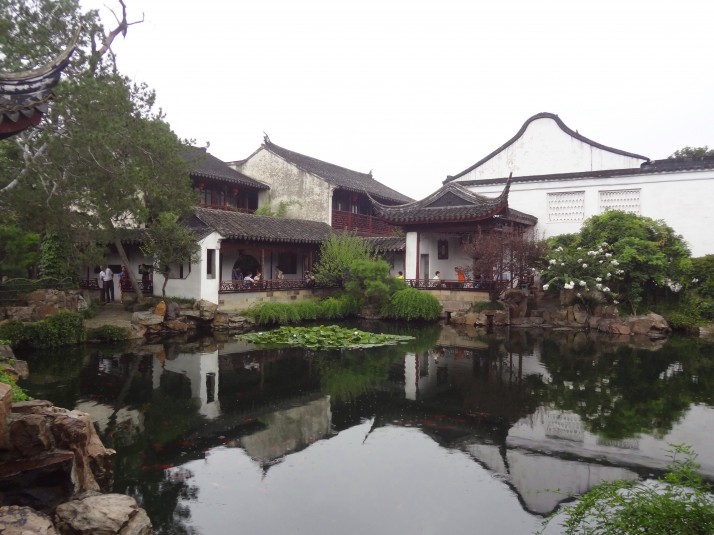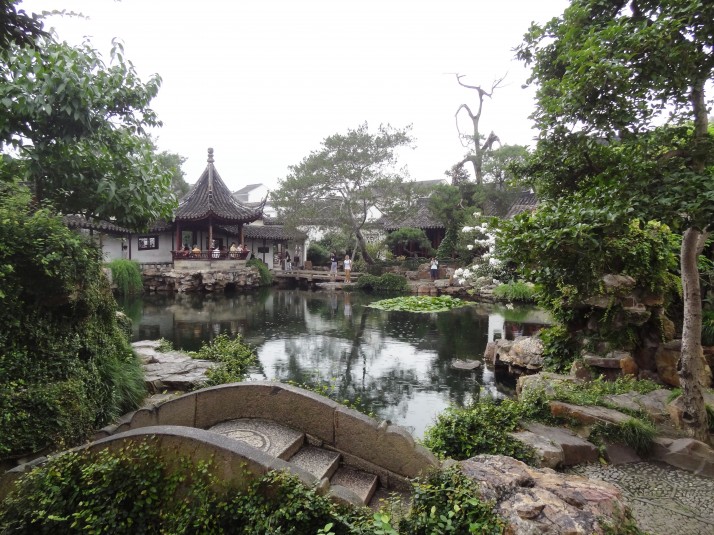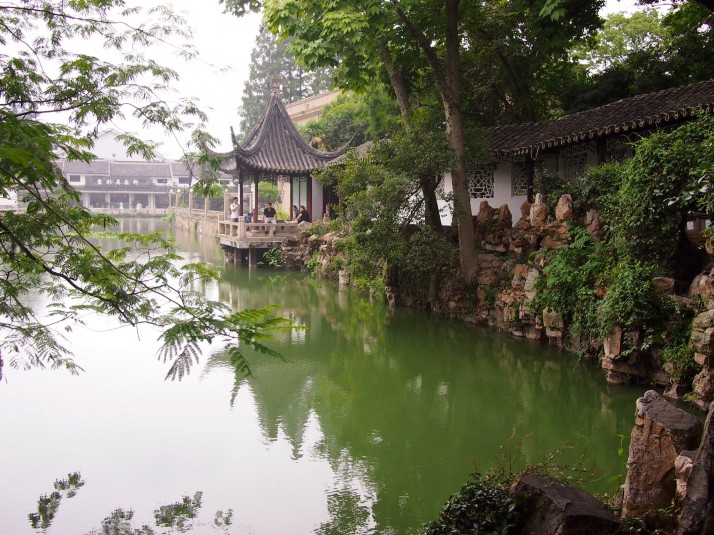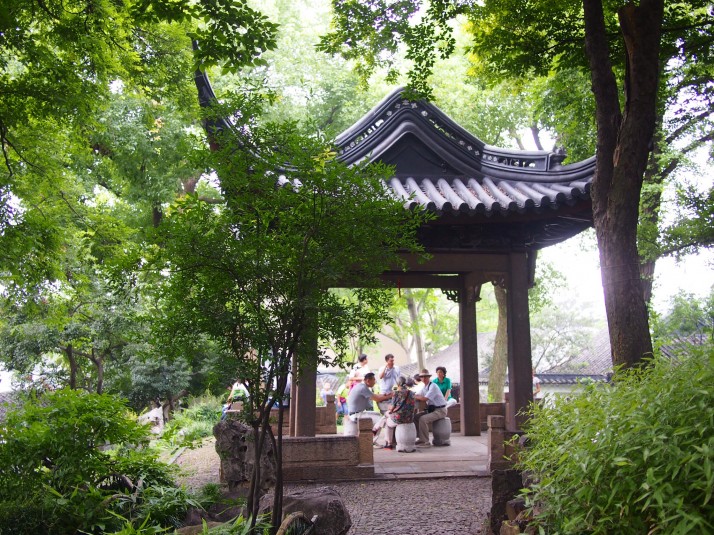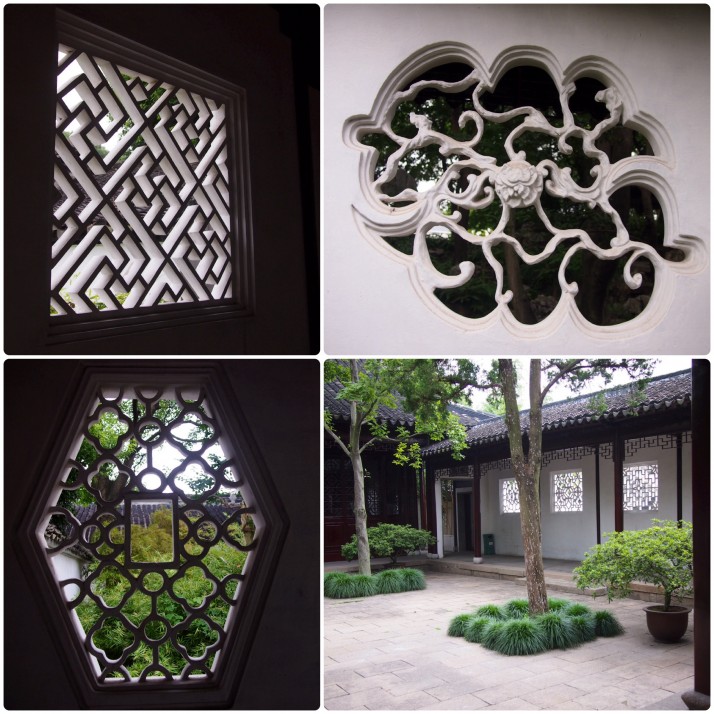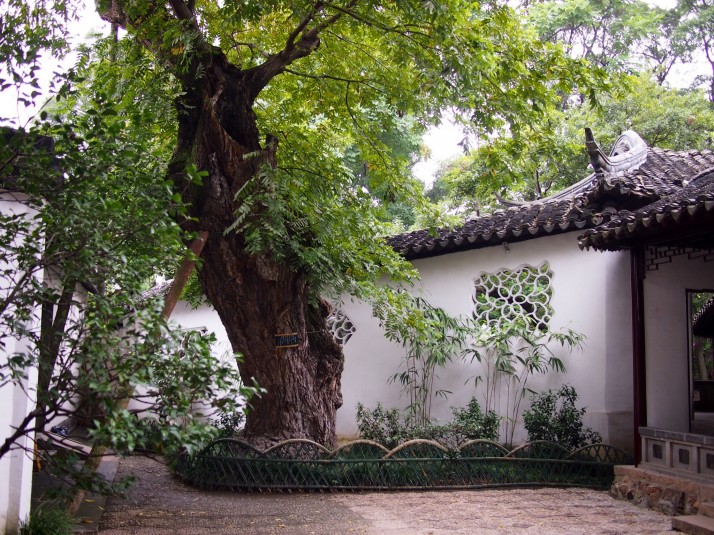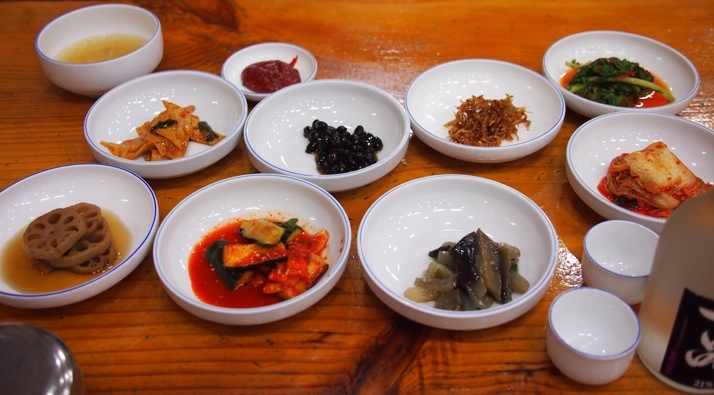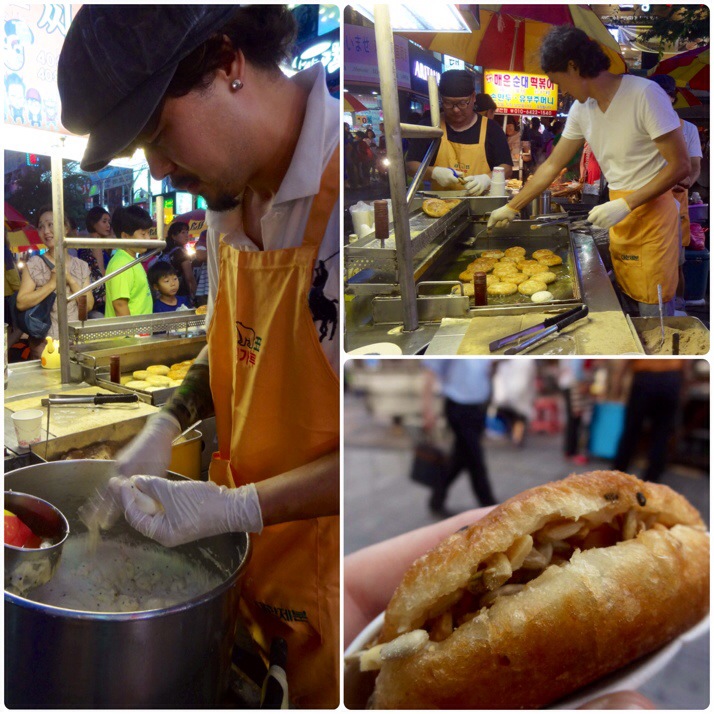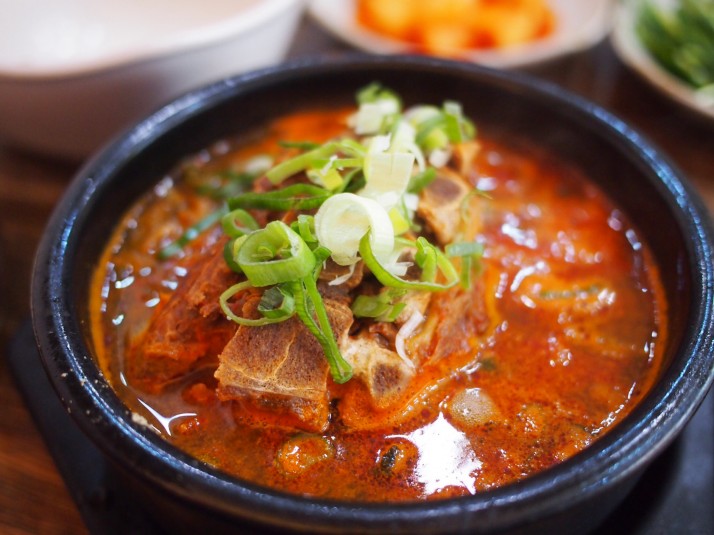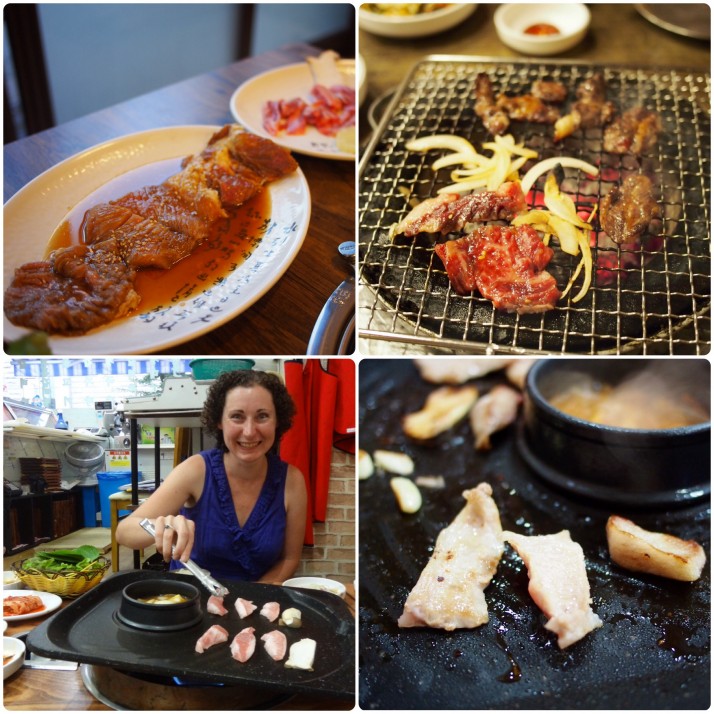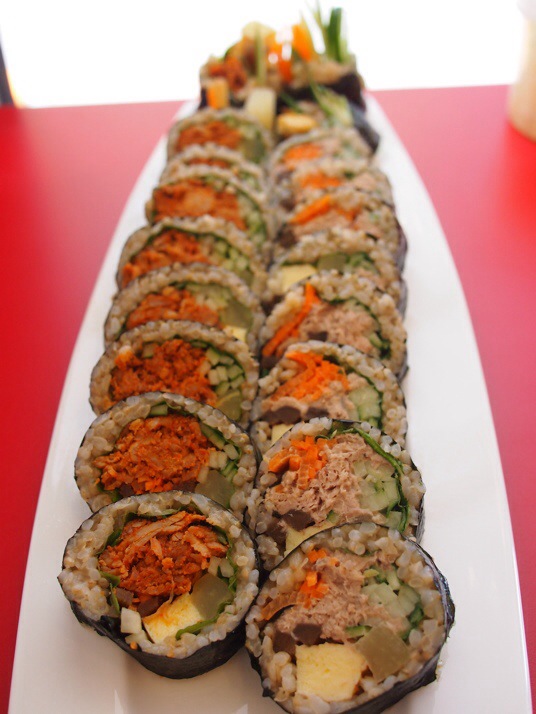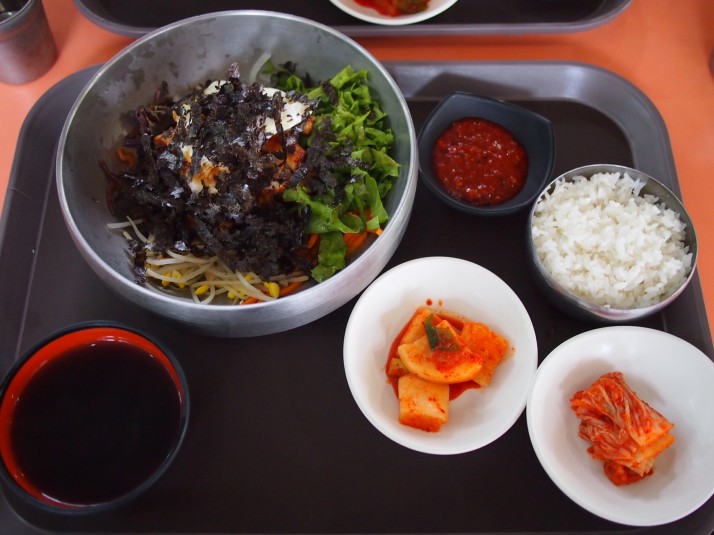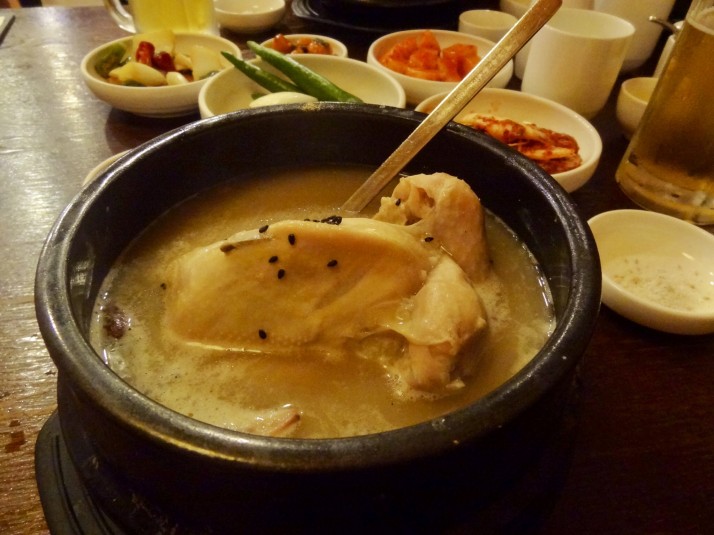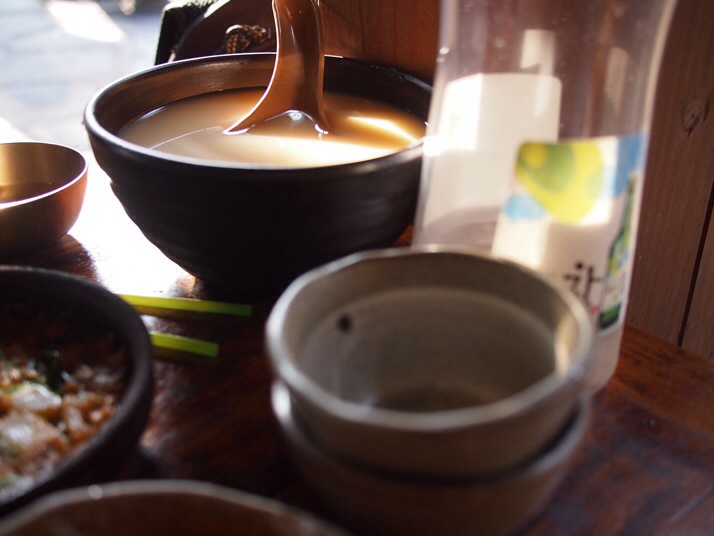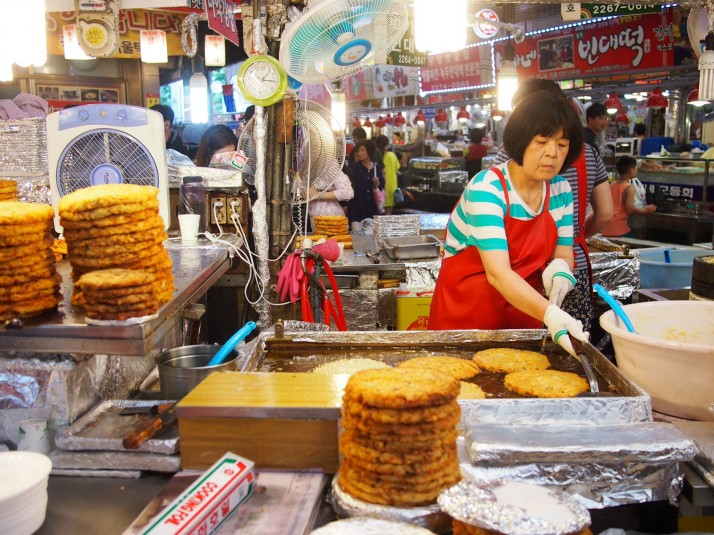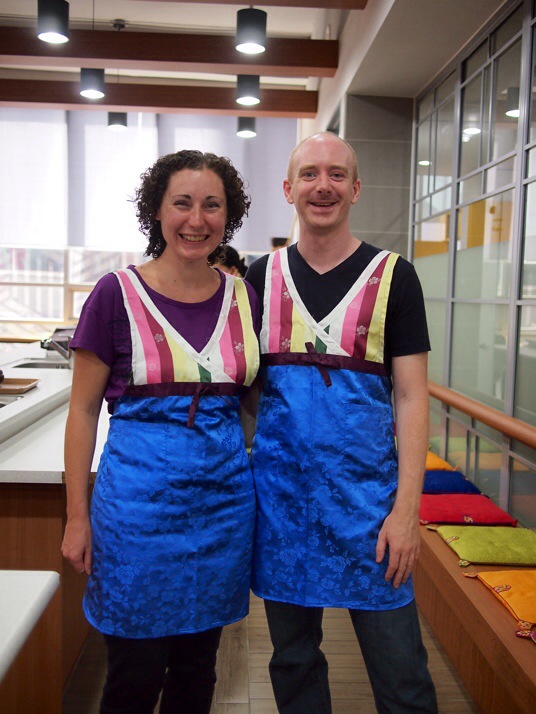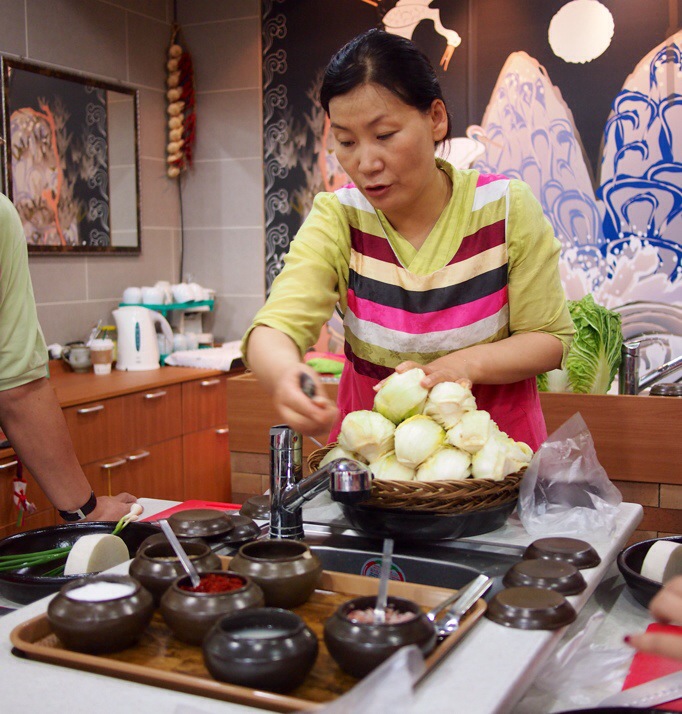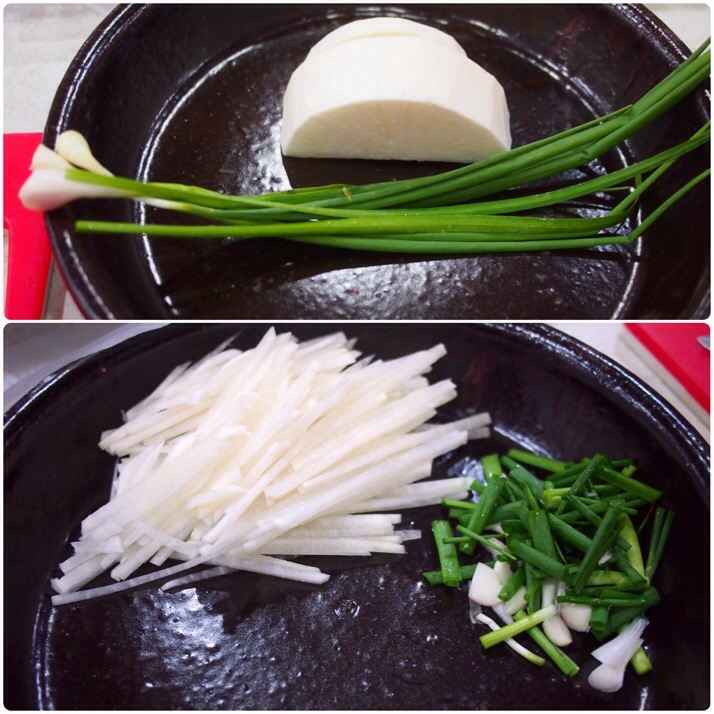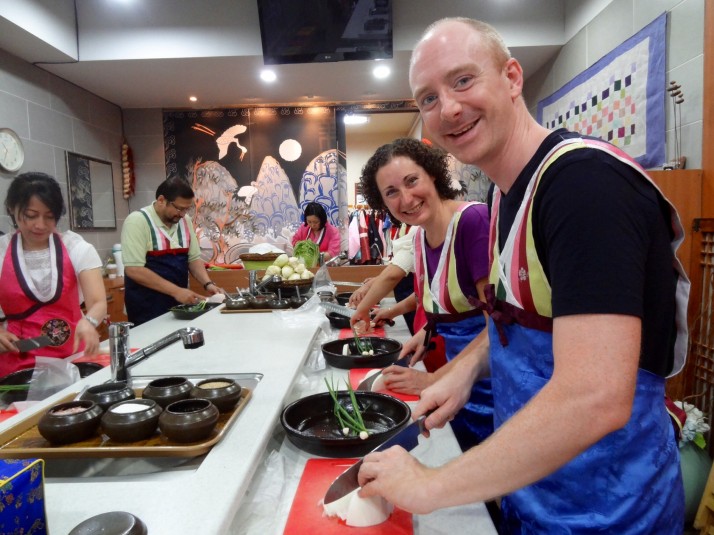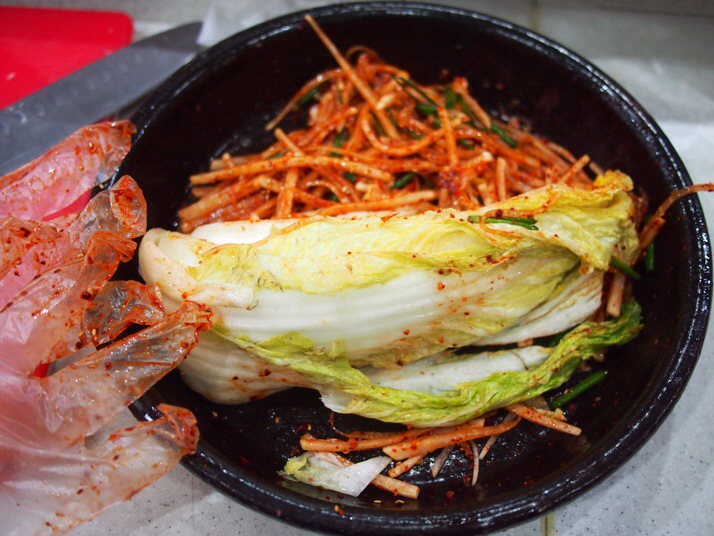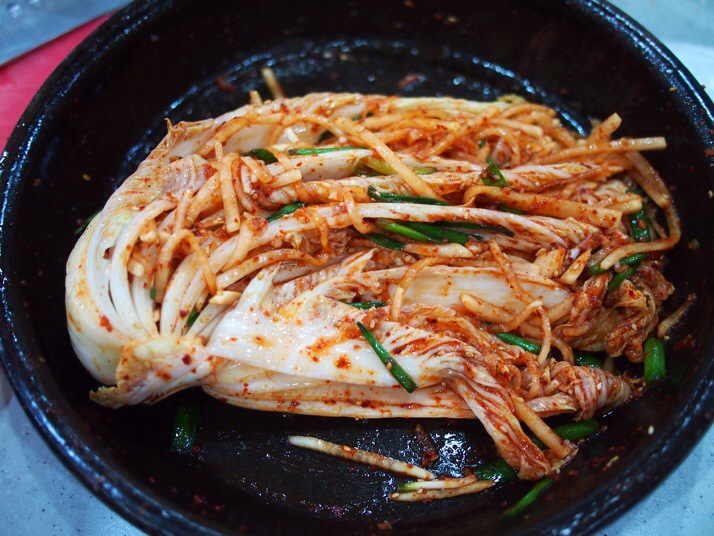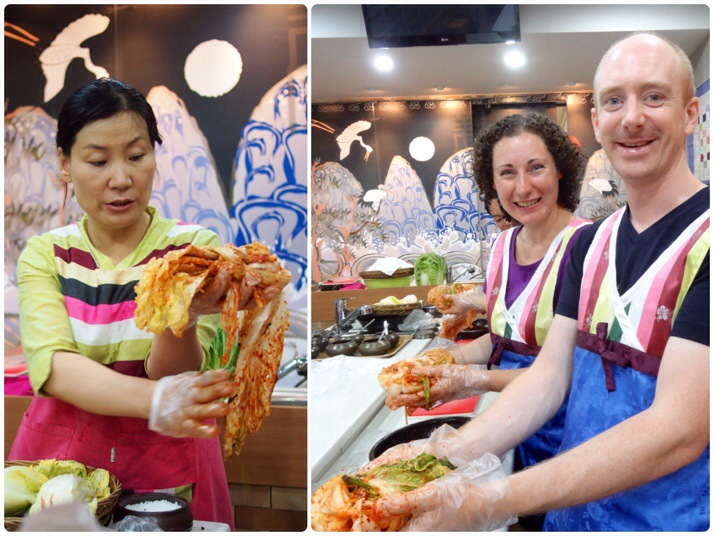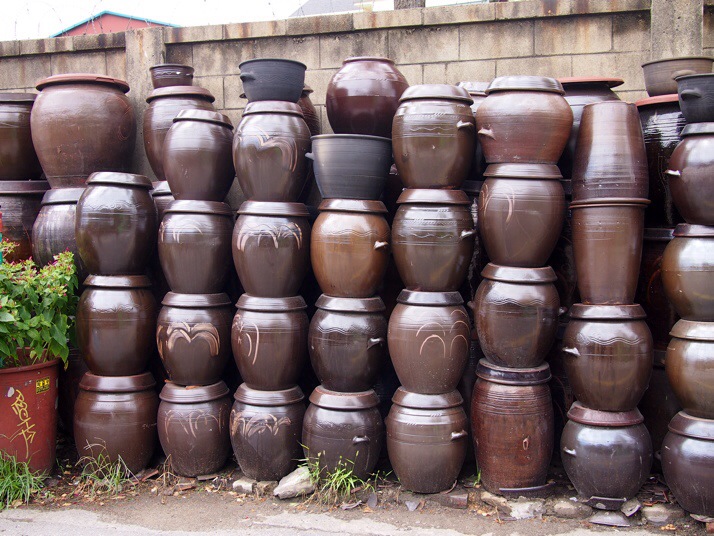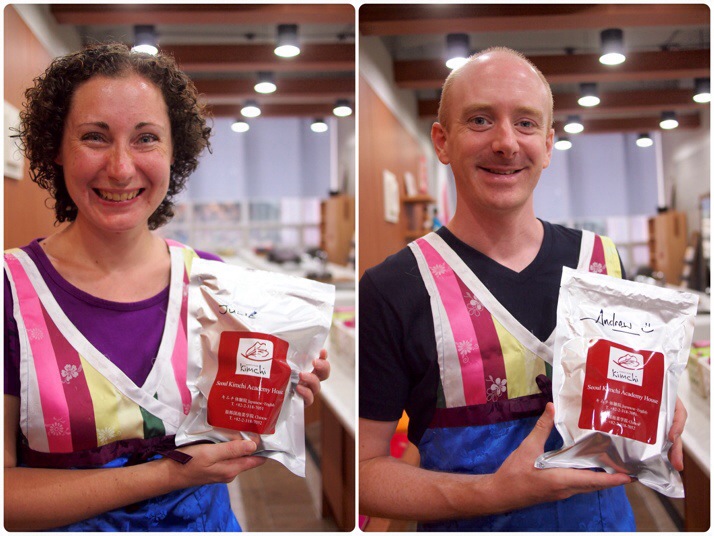If you’ve watched the 2009 film ‘Avatar’ (you know, the one with the blue people) and marvelled at the spectacular otherworldly landscape of the alien planet then you’ll be interested to know that the landforms of Zhangjiajie National Park in Hunan province were the inspiration (although the pillars here don’t float in mid-air!). If you haven’t seen the film then you just need to know that this is some of the most incredible scenery we’ve ever seen.
Tianmen mountain
The hotel where we stayed is just around the corner from the cable car station to Tianmen Mountain. This is not technically a part of the National Park but it does offer some stunning views.
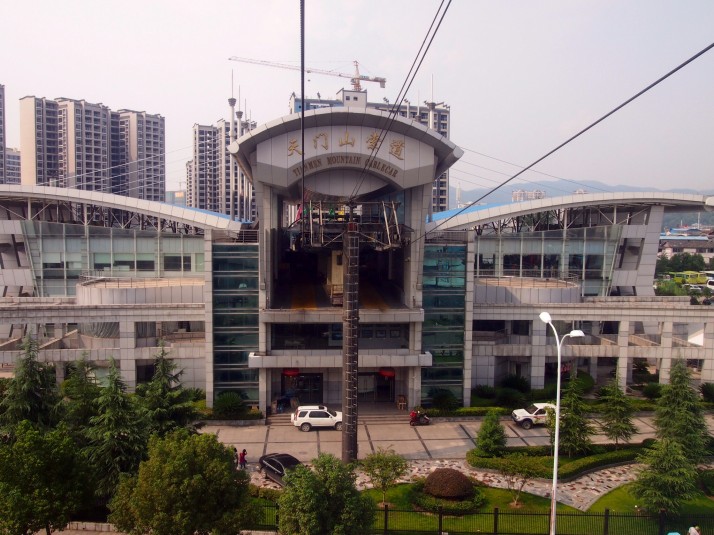 Tianmen mountain cable car station
Tianmen mountain cable car station
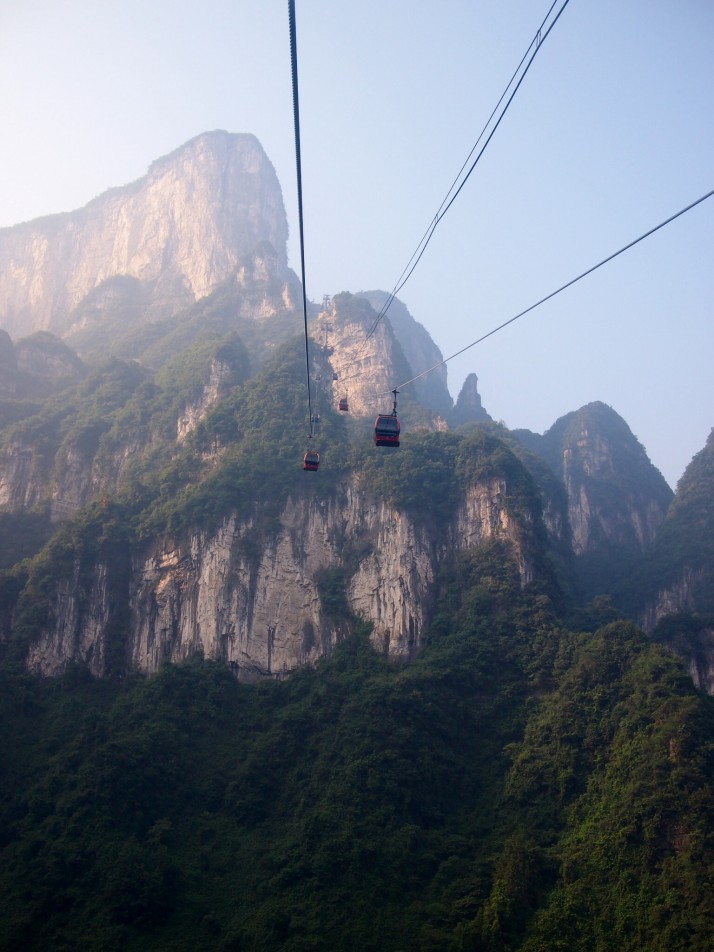 The Tianmen mountain cable car is the longest in the world covering almost 7.5km and taking about 30 minutes to reach the summit
The Tianmen mountain cable car is the longest in the world covering almost 7.5km and taking about 30 minutes to reach the summit
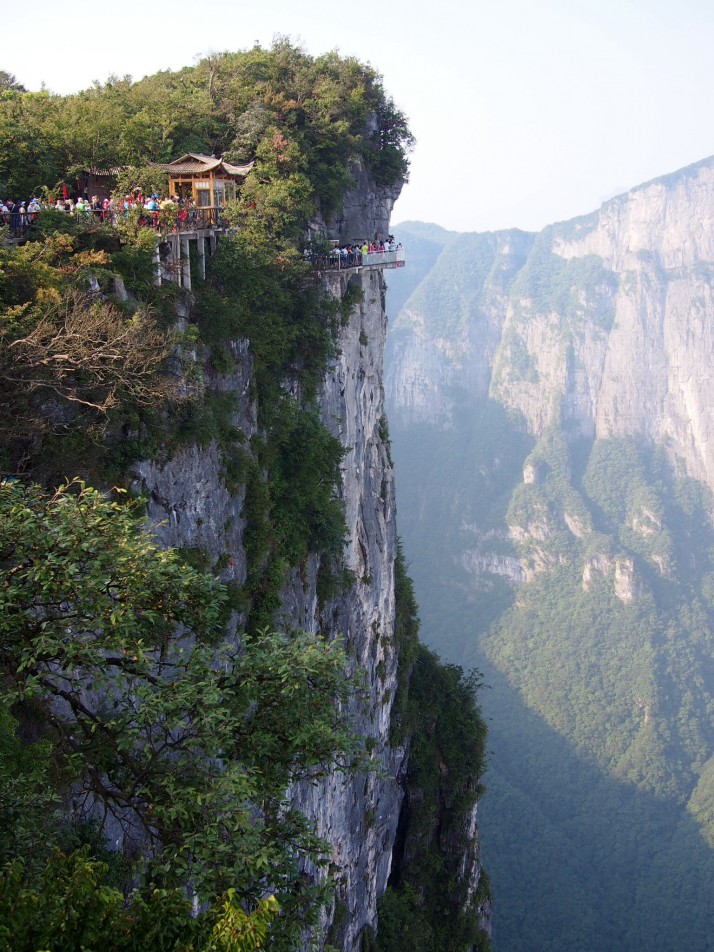 There was a steadily moving queue of tourists waiting to walk along the 60m section of the cliffside path which is floored with glass
There was a steadily moving queue of tourists waiting to walk along the 60m section of the cliffside path which is floored with glass
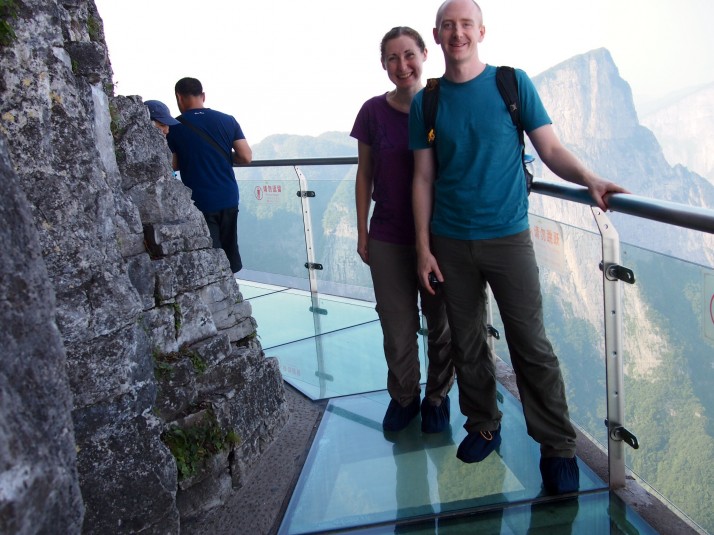 Feeling brave standing on glass with 1,500m of thin air below us
Feeling brave standing on glass with 1,500m of thin air below us
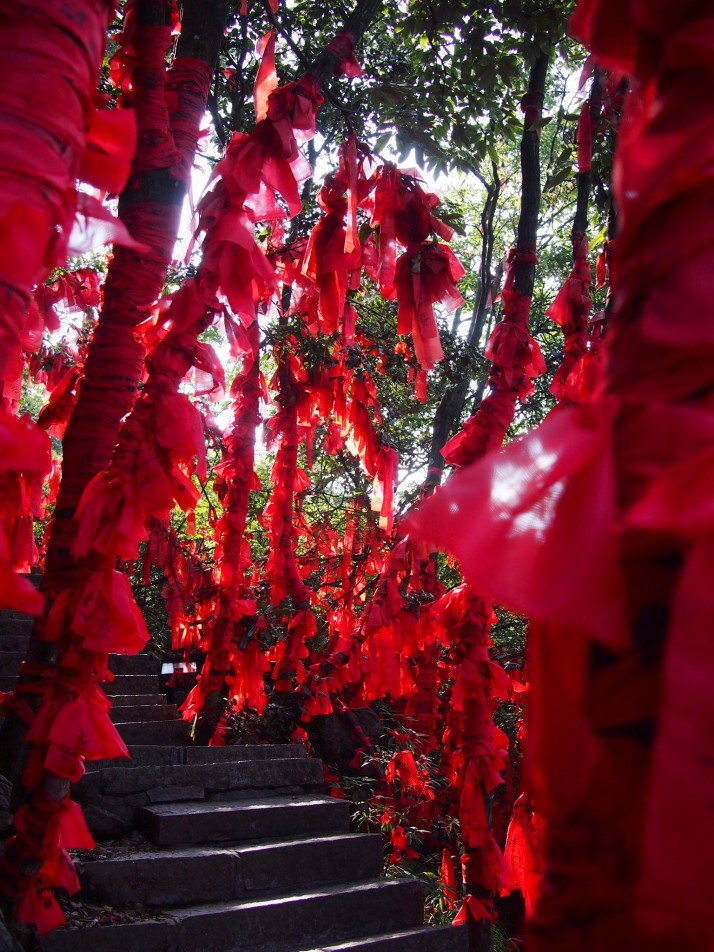 Visitors tie red ribbons to trees to make a wish
Visitors tie red ribbons to trees to make a wish
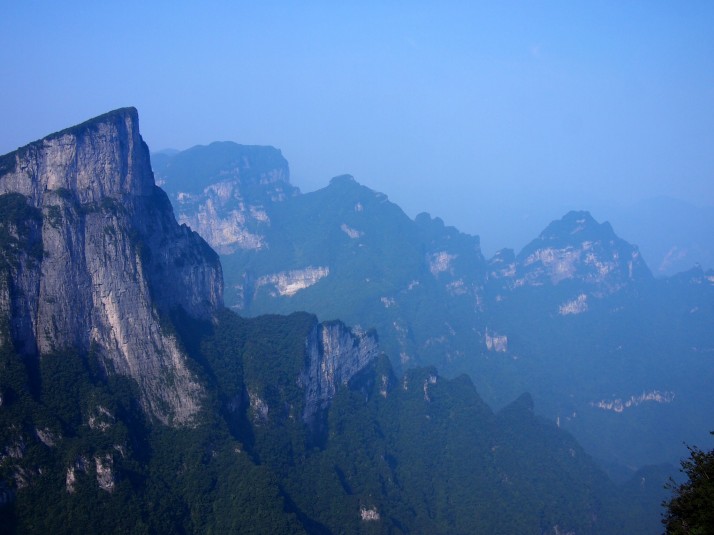 Fantastic views from the Guigu cliffs at the eastern side of Tianmen mountain
Fantastic views from the Guigu cliffs at the eastern side of Tianmen mountain
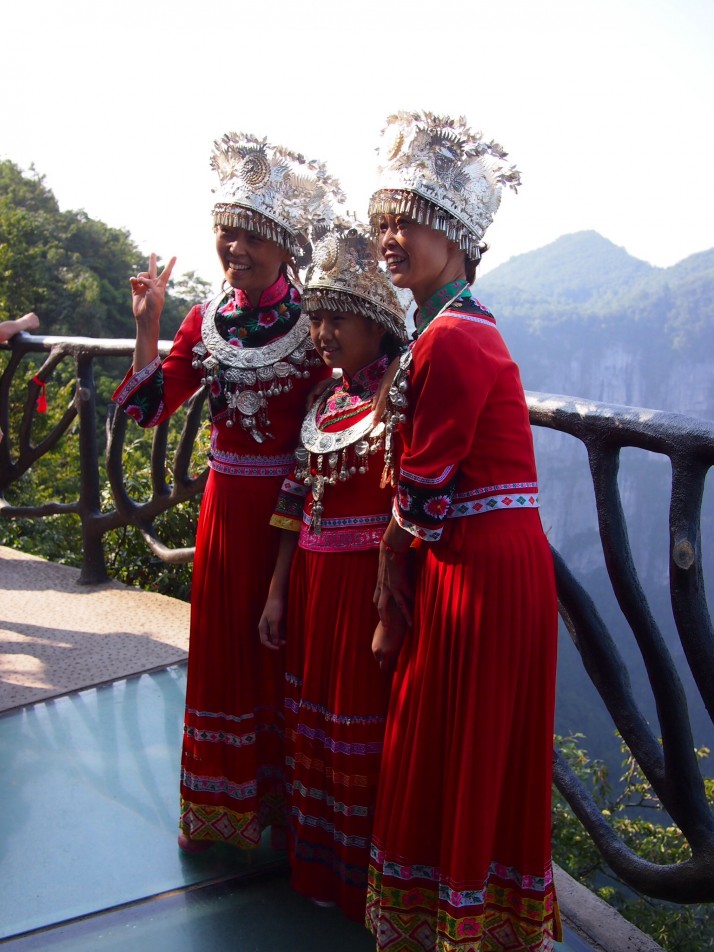 There were lots of opportunities to dress in traditional costumes and have your photo taken with the view behind – for a fee obviously!
There were lots of opportunities to dress in traditional costumes and have your photo taken with the view behind – for a fee obviously!
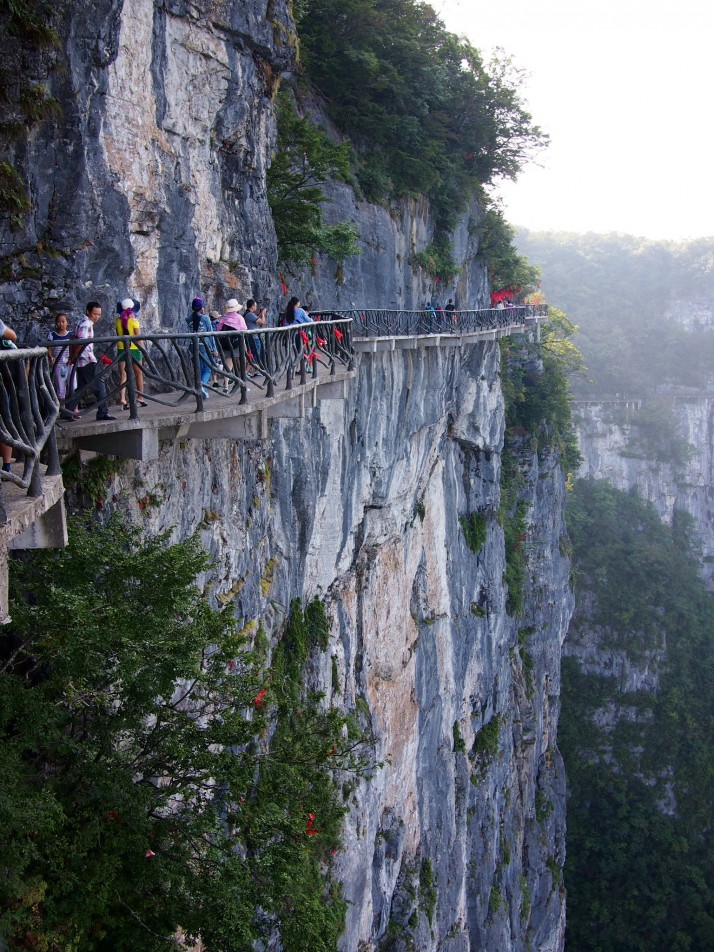 Most of the cliffside path is made from concrete. Our minds boggled at the engineering feat required to get all the concrete up the mountain and attached to the sheer cliff face.
Most of the cliffside path is made from concrete. Our minds boggled at the engineering feat required to get all the concrete up the mountain and attached to the sheer cliff face.
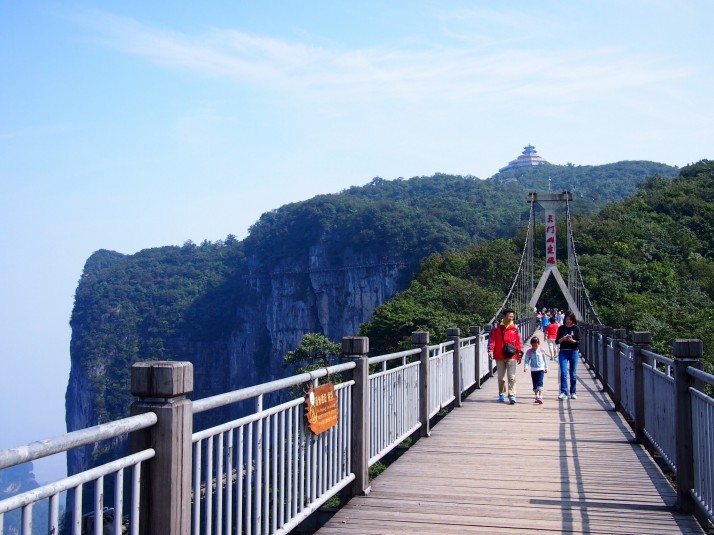 Suspension bridge across a ravine and, in the background, the building at Yunmeng fairy peak
Suspension bridge across a ravine and, in the background, the building at Yunmeng fairy peak
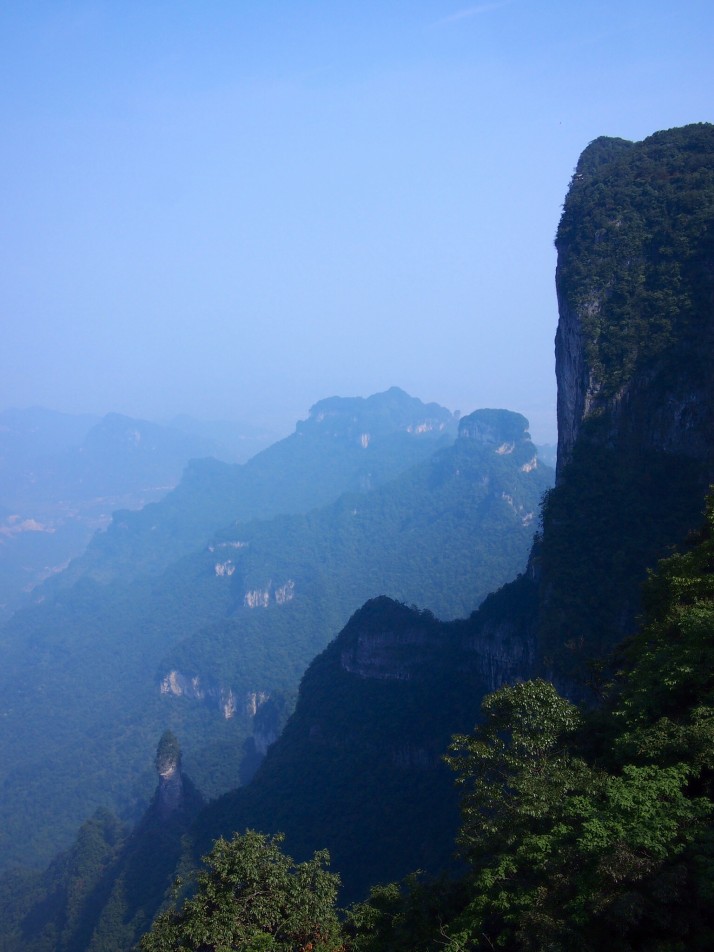 The view was just as beautiful from the western cliff and there were far fewer tourists on that section
The view was just as beautiful from the western cliff and there were far fewer tourists on that section
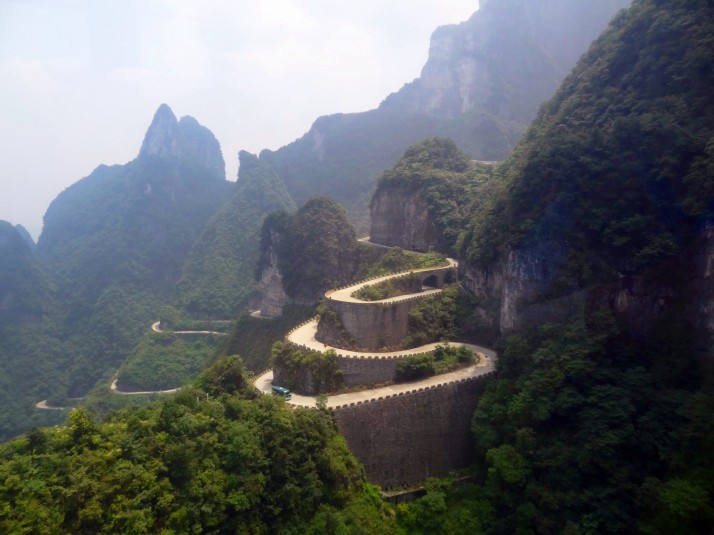 Halfway back down the mountain we got off at the middle cablecar station and got into a shuttle bus for the drive up the road of 99 hairpin bends to the Tianmen Cave
Halfway back down the mountain we got off at the middle cablecar station and got into a shuttle bus for the drive up the road of 99 hairpin bends to the Tianmen Cave
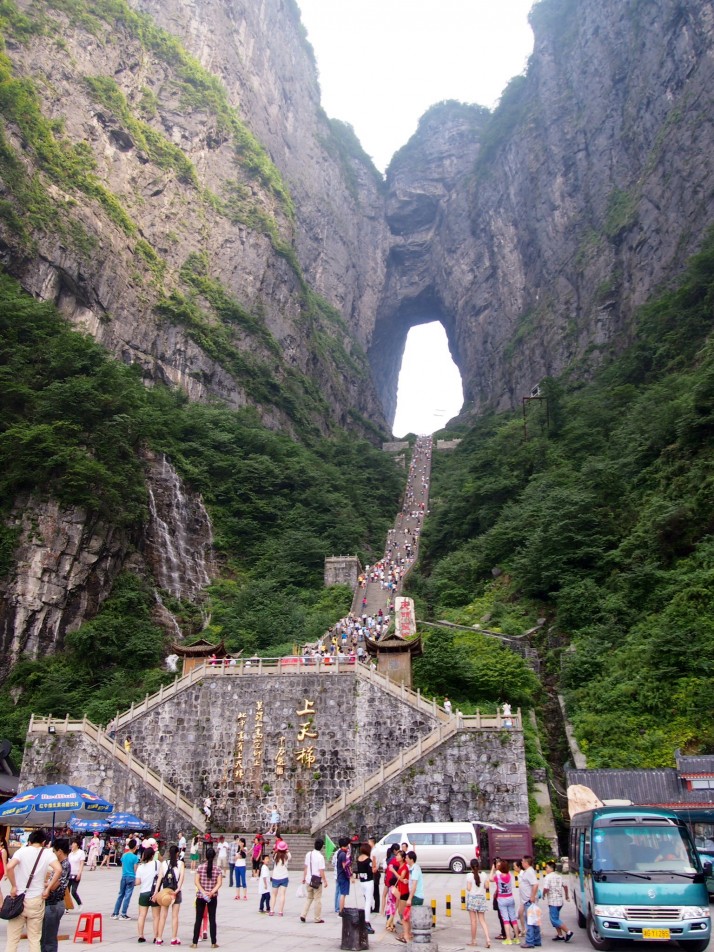 Tianmen Cave is a huge opening through the mountain. We climbed the 999 steps to the top
Tianmen Cave is a huge opening through the mountain. We climbed the 999 steps to the top
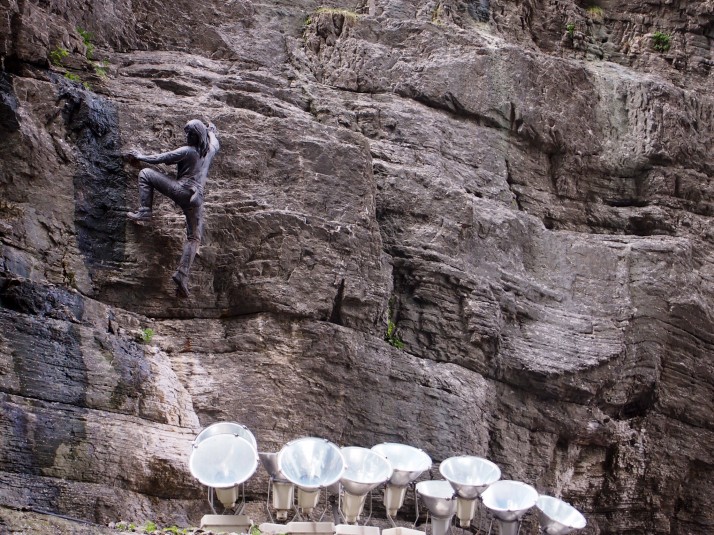 The mountain is famous for a number of stunts attempted by daredevils. French climber Alain Robert who scaled the inside of the cave without ropes is commemorated by this bronze sculpture and a plaque. Other crazy people have tightrope walked up the cableway lines and flown through the cave in wingsuits!
The mountain is famous for a number of stunts attempted by daredevils. French climber Alain Robert who scaled the inside of the cave without ropes is commemorated by this bronze sculpture and a plaque. Other crazy people have tightrope walked up the cableway lines and flown through the cave in wingsuits!
Zhangjiajie National Park
If you can pronounce ‘Zhangjiajie’ such that a Chinese person will understand where you mean you’re doing much better than us. Every time we tried to explain to people we met afterwards where we had been we couldn’t make them understand and just ended up telling them that it was in Hunan Province… The karst scenery reminded us of Ha Long Bay in Vietnam although the pillars here are of sandstone not limestone, plus they’re a long way from the sea!
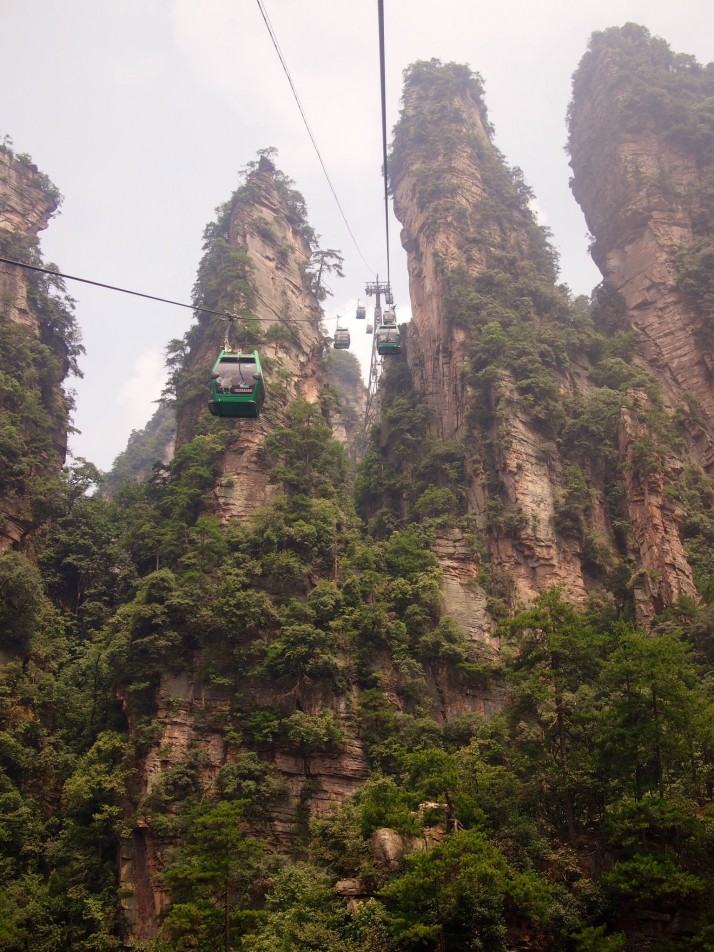 Our first day in the national park started with another cable car ride. The line up to the Huangshizhai area is much shorter than the Tianmen mountain one, but runs between the sandstone karsts and is breathtakingly beautiful
Our first day in the national park started with another cable car ride. The line up to the Huangshizhai area is much shorter than the Tianmen mountain one, but runs between the sandstone karsts and is breathtakingly beautiful
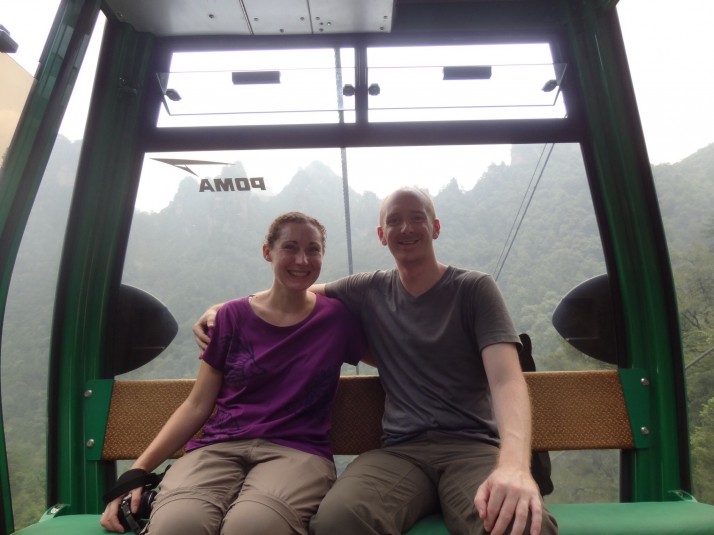 Enjoying the ride in the Huangshizhai cablecar
Enjoying the ride in the Huangshizhai cablecar
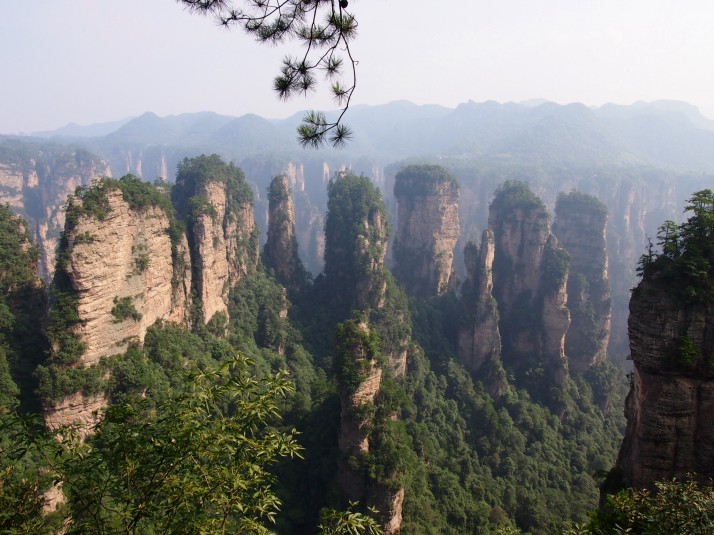 Another couple in our hotel who’d already visited advised us to take the clockwise path around the mountain top as the views get better – surely they couldn’t get much better than this?
Another couple in our hotel who’d already visited advised us to take the clockwise path around the mountain top as the views get better – surely they couldn’t get much better than this?
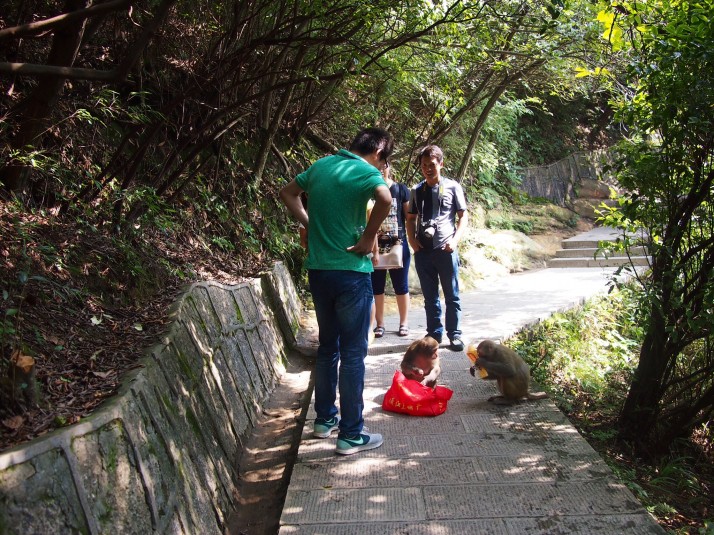 The monkeys in Zhangjiajie National Park have learnt that visitors often carry their picnic in a carrier bag and will ambush and try to steal the contents of any carrier bag that they spot
The monkeys in Zhangjiajie National Park have learnt that visitors often carry their picnic in a carrier bag and will ambush and try to steal the contents of any carrier bag that they spot
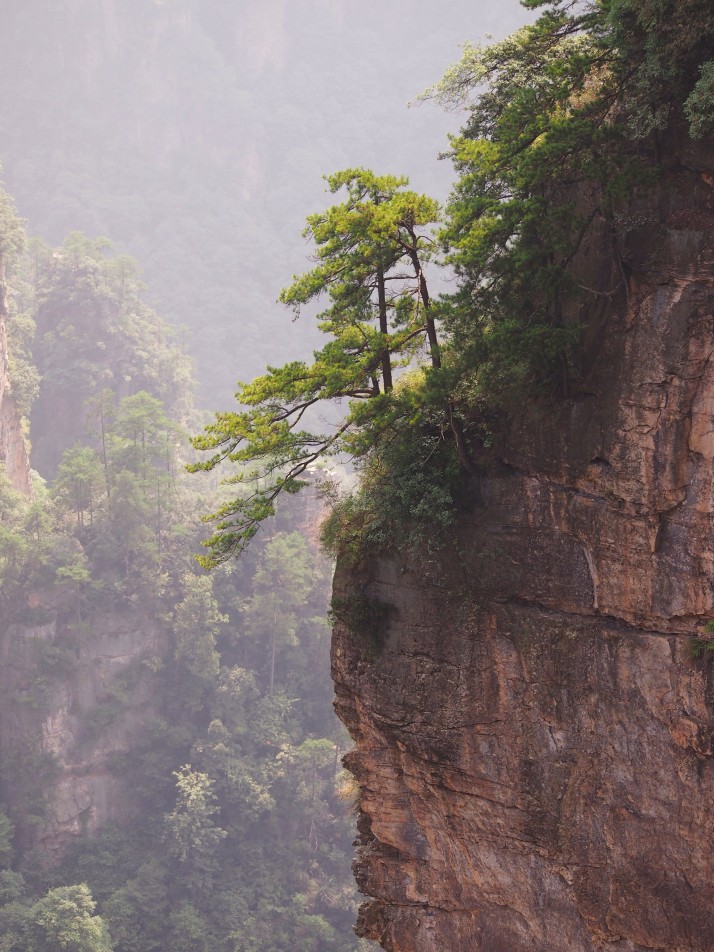 The pine trees in Zhangjiajie are a variety of pinus massoniana and manage to grow in seemingly impossible places
The pine trees in Zhangjiajie are a variety of pinus massoniana and manage to grow in seemingly impossible places
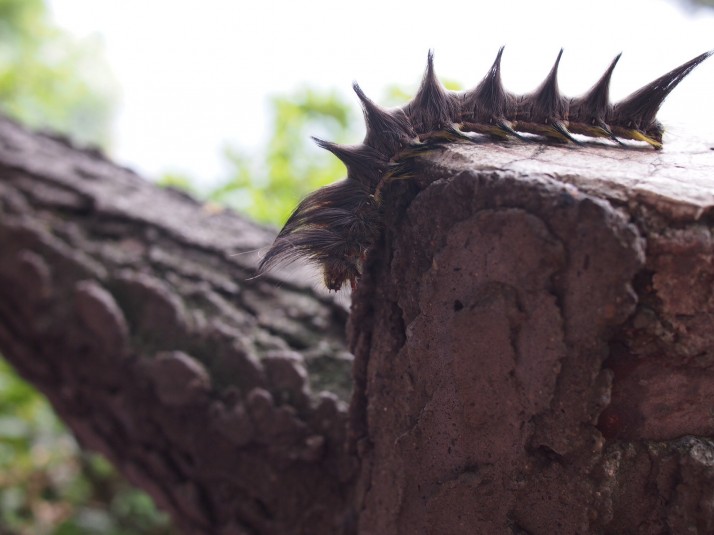 We spotted this caterpillar on a fence post, I think he was returning from an appointment with the hairdresser!
We spotted this caterpillar on a fence post, I think he was returning from an appointment with the hairdresser!
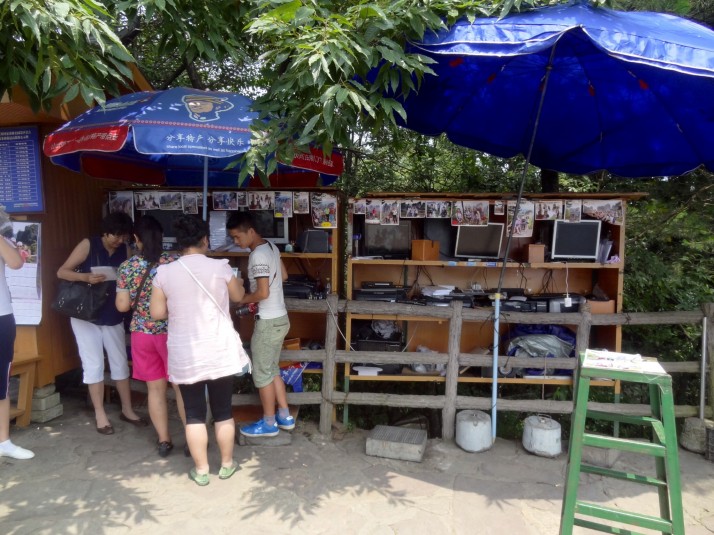 Many of the viewing platforms were equipped with professional photographers who would take your family’s photograph in front of the scenery and supply an instant print or even a calendar
Many of the viewing platforms were equipped with professional photographers who would take your family’s photograph in front of the scenery and supply an instant print or even a calendar
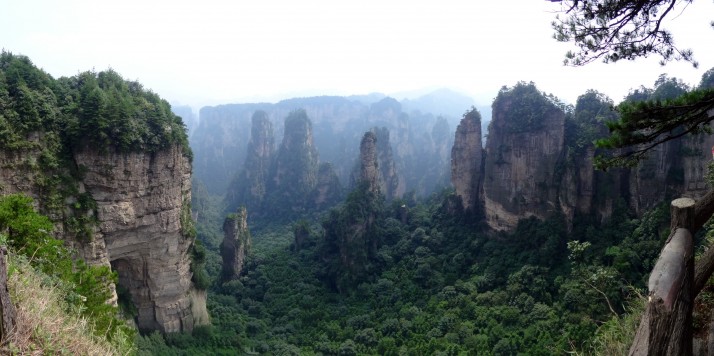 The views did indeed get even better the further we walked along the path
The views did indeed get even better the further we walked along the path
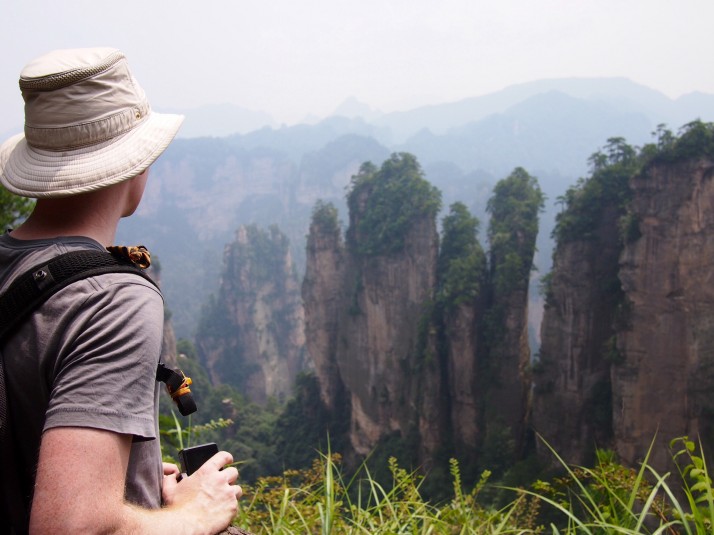 The final viewpoint before descending by cable car again is at Five Finger Peak
The final viewpoint before descending by cable car again is at Five Finger Peak
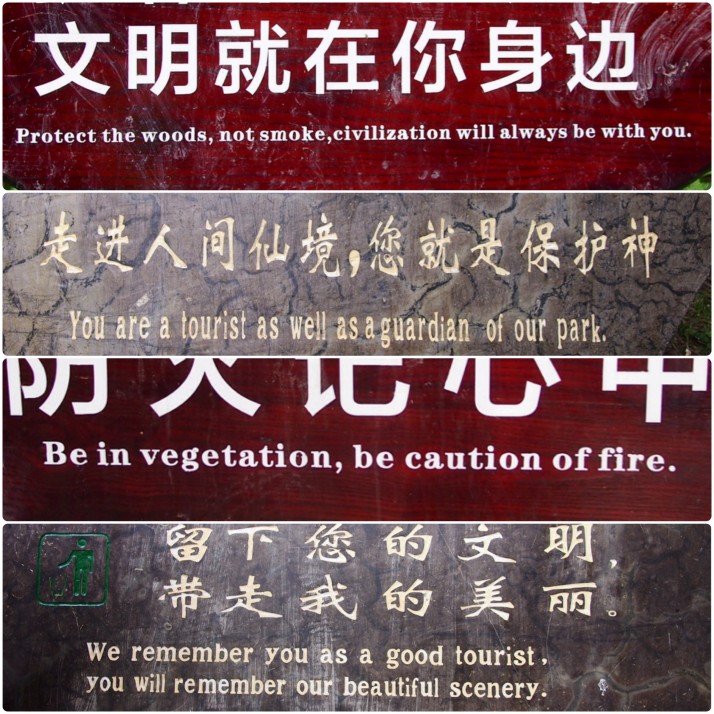 Signs around the park exhorting visitors not to smoke or litter read somewhat like Confucian aphorisms
Signs around the park exhorting visitors not to smoke or litter read somewhat like Confucian aphorisms
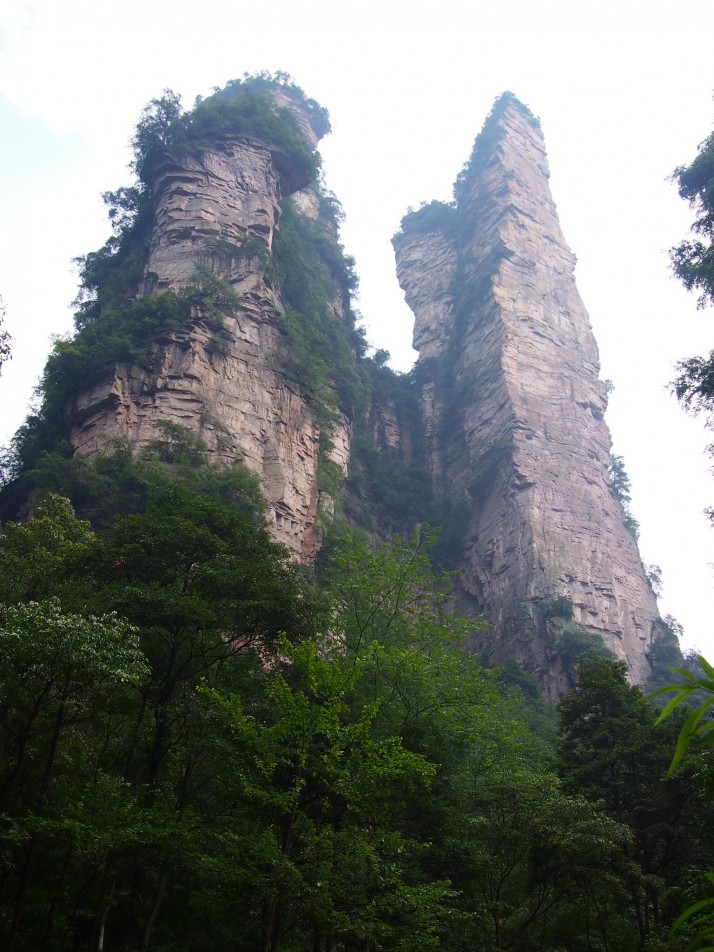 After descending from Huangshizhai we took the path along the Golden Whip Stream which gave us neck aching views of some of the karsts from below
After descending from Huangshizhai we took the path along the Golden Whip Stream which gave us neck aching views of some of the karsts from below
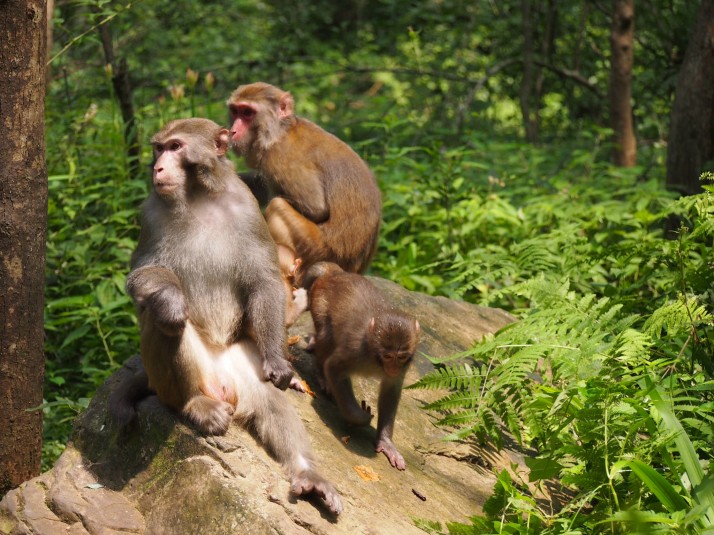 There was a large group of monkeys along the trail. We stopped to watch their antics for about 20 minutes
There was a large group of monkeys along the trail. We stopped to watch their antics for about 20 minutes
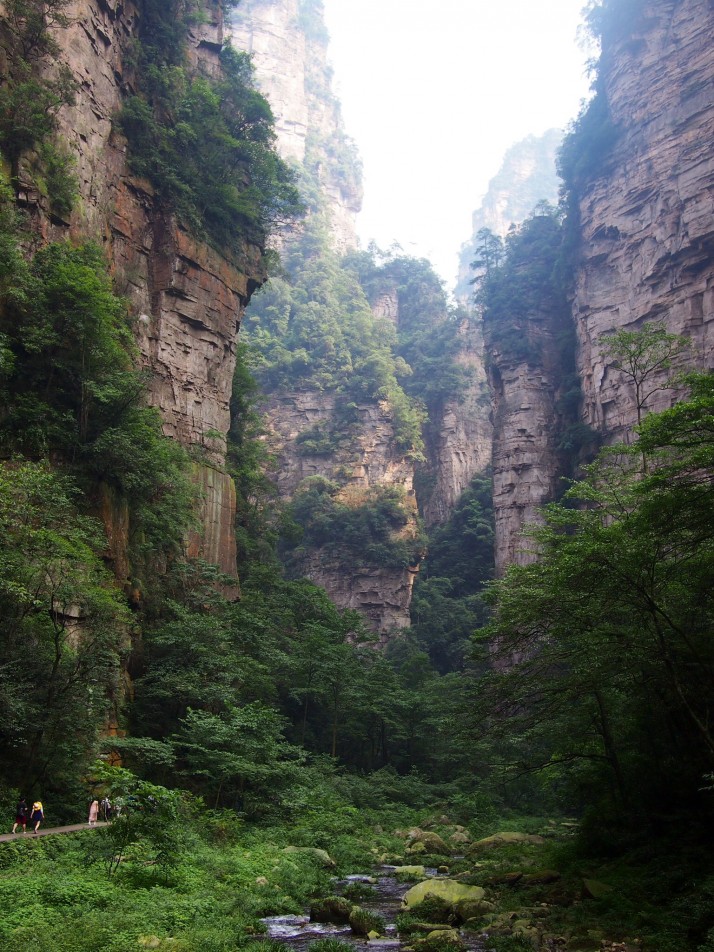 The sides of the Golden Whip Stream valley are dizzyingly high
The sides of the Golden Whip Stream valley are dizzyingly high
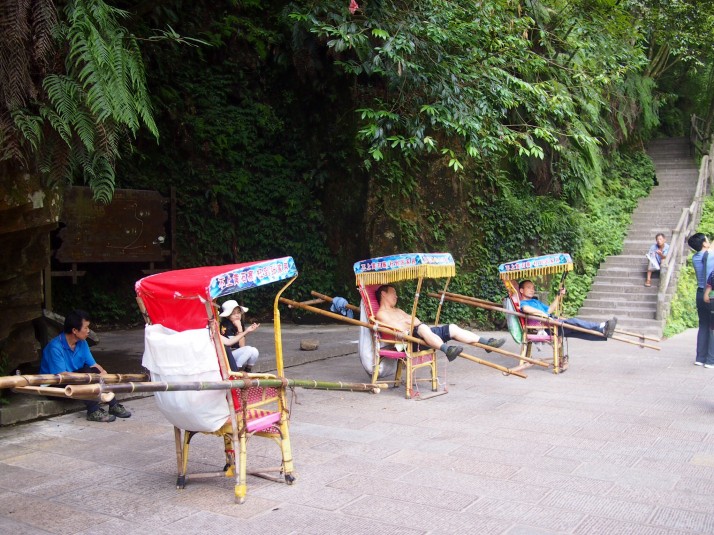 There were lots of opportunities for sedan chair rides along the trail but it seems that there weren’t many customers as most of the carriers were asleep
There were lots of opportunities for sedan chair rides along the trail but it seems that there weren’t many customers as most of the carriers were asleep
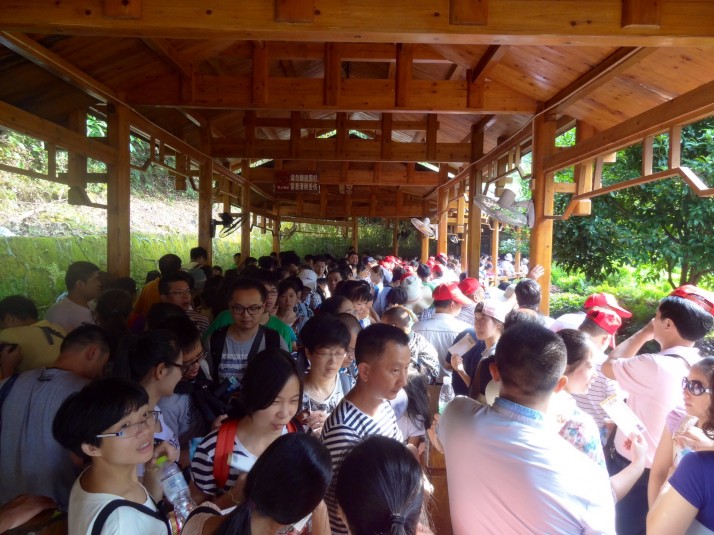 On our second morning we made another early start but still had to wait for nearly 90 minutes in the queue for the Tianzi mountain cable car
On our second morning we made another early start but still had to wait for nearly 90 minutes in the queue for the Tianzi mountain cable car
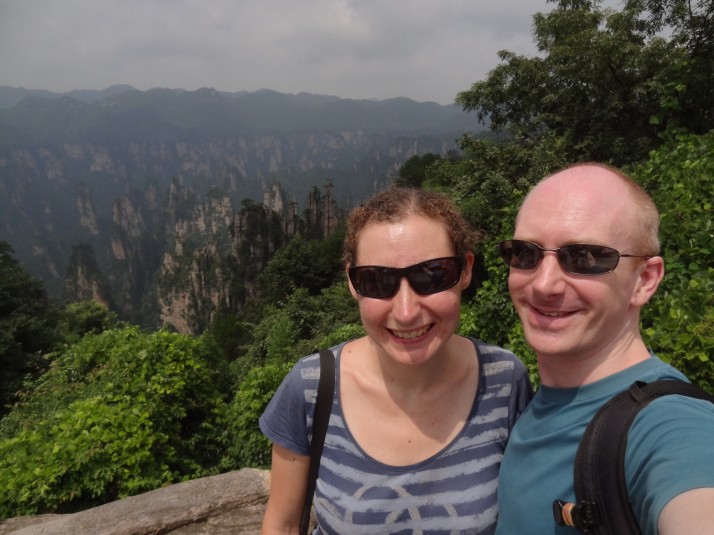 These karsts are called the ‘Imperial Writing Brush Peaks’ presumably because of their narrow, pointed form
These karsts are called the ‘Imperial Writing Brush Peaks’ presumably because of their narrow, pointed form
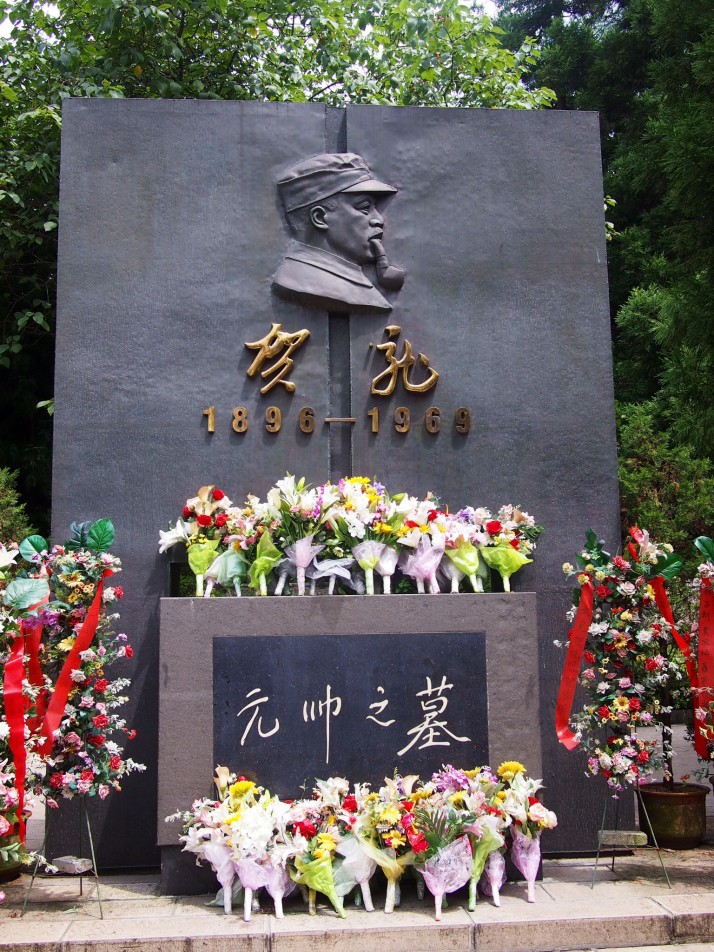 Local boy Marshal He Long was a military leader who supported Mao’s rise to power, he was named as one of the ‘Ten Marshals’ and is buried in this beautiful spot on the top of Tianzi mountain
Local boy Marshal He Long was a military leader who supported Mao’s rise to power, he was named as one of the ‘Ten Marshals’ and is buried in this beautiful spot on the top of Tianzi mountain
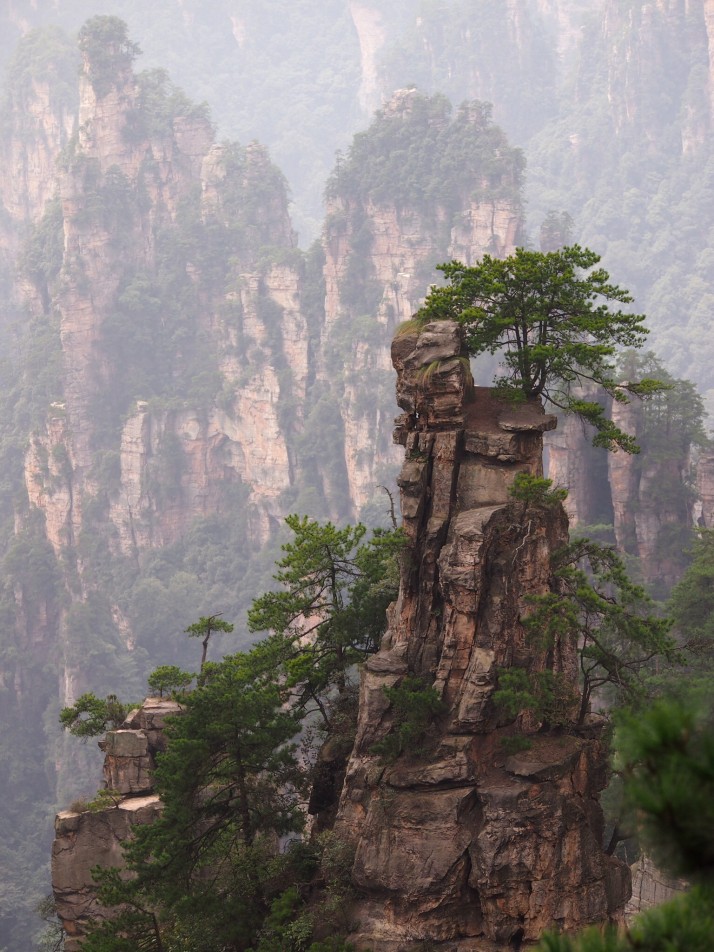 A bird’s eye view of pine trees growing on the sandstone pillars
A bird’s eye view of pine trees growing on the sandstone pillars
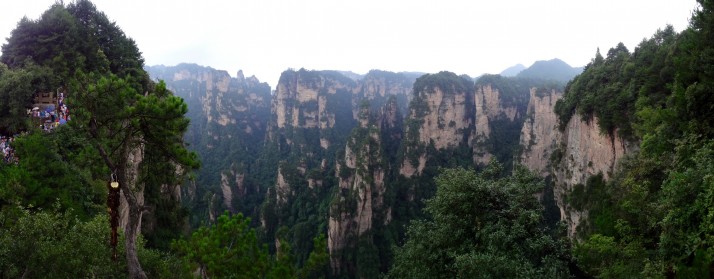 After a short bus ride we arrived at the Yuanjiajie area, one of the most heavily touristed areas in the park and for good reason
After a short bus ride we arrived at the Yuanjiajie area, one of the most heavily touristed areas in the park and for good reason
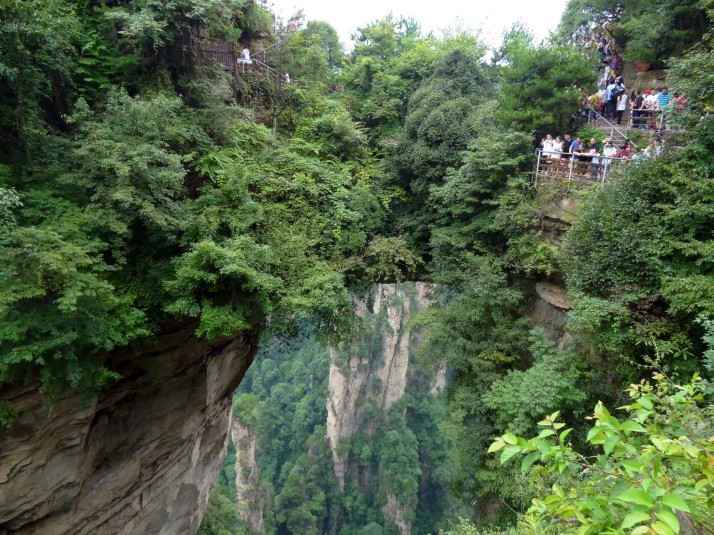 In this area there is a bridge of rock which formed naturally when the lower rocks fell away due to erosion and weathering
In this area there is a bridge of rock which formed naturally when the lower rocks fell away due to erosion and weathering
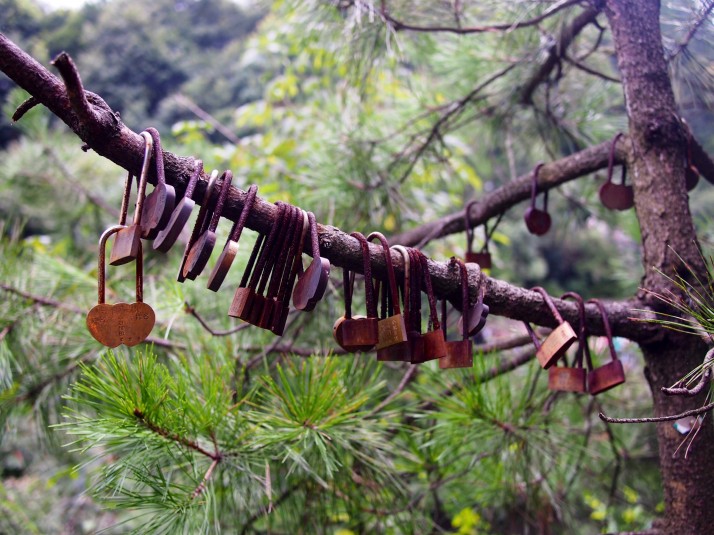 The mountain beyond the rock bridge has been designated as a lucky area to make a wish by attaching a padlock, the fence rails and even surrounding trees were covered with them
The mountain beyond the rock bridge has been designated as a lucky area to make a wish by attaching a padlock, the fence rails and even surrounding trees were covered with them
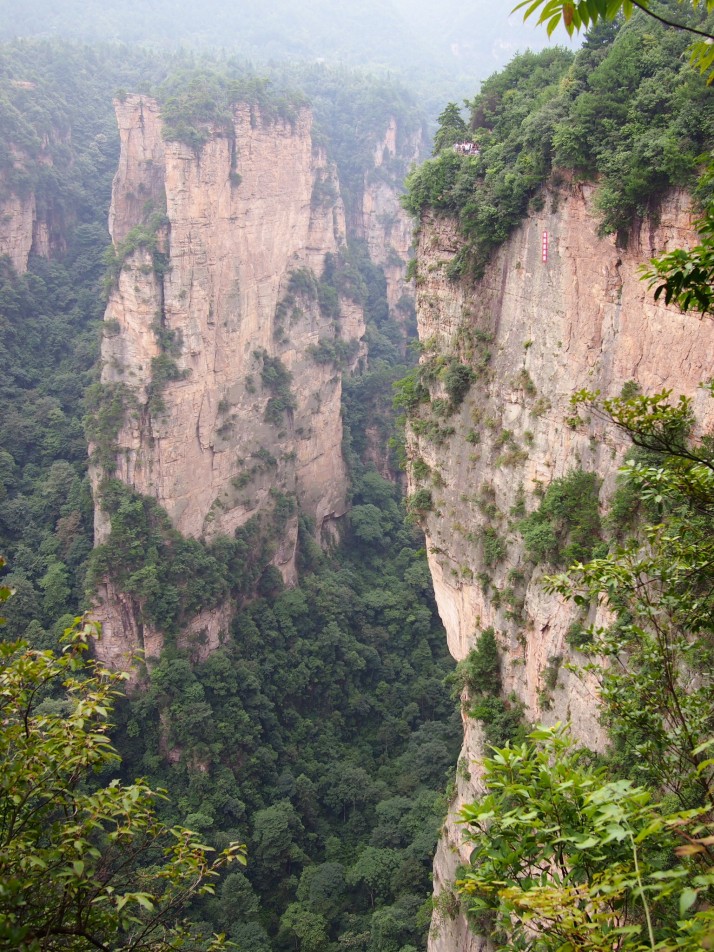 This is one of my favourite pictures showing the scale of the park: there is a viewing platform holding about 20 people on top of the cliff to the right of the picture – can you spot it?
This is one of my favourite pictures showing the scale of the park: there is a viewing platform holding about 20 people on top of the cliff to the right of the picture – can you spot it?
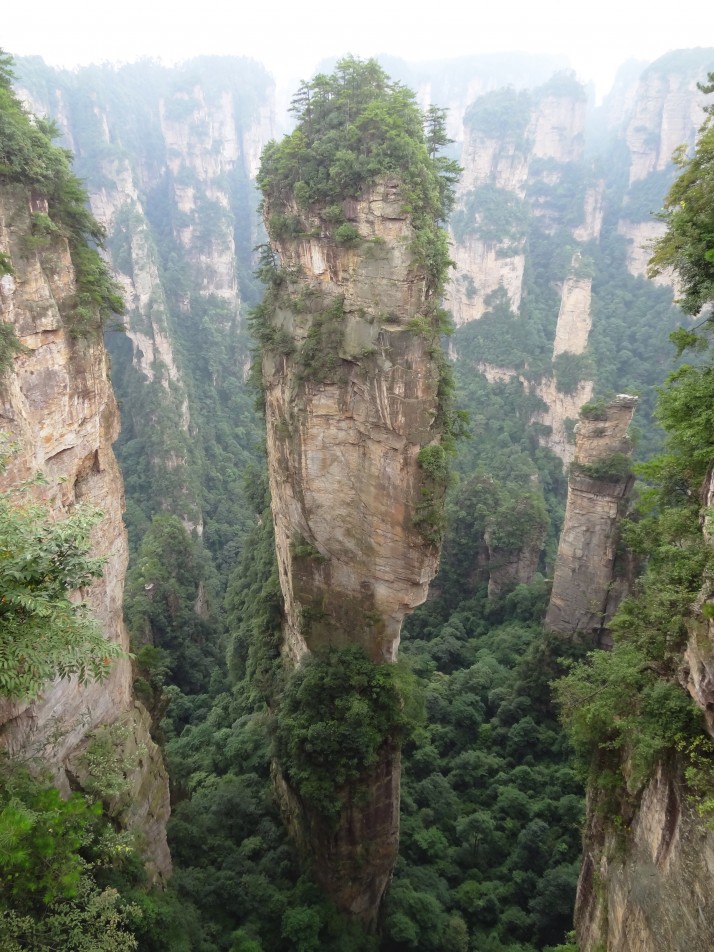 This club-shaped karst has been renamed ‘Avatar Hallelujah Mountain’ in honour of the floating mountains in the ‘Avatar’ film
This club-shaped karst has been renamed ‘Avatar Hallelujah Mountain’ in honour of the floating mountains in the ‘Avatar’ film
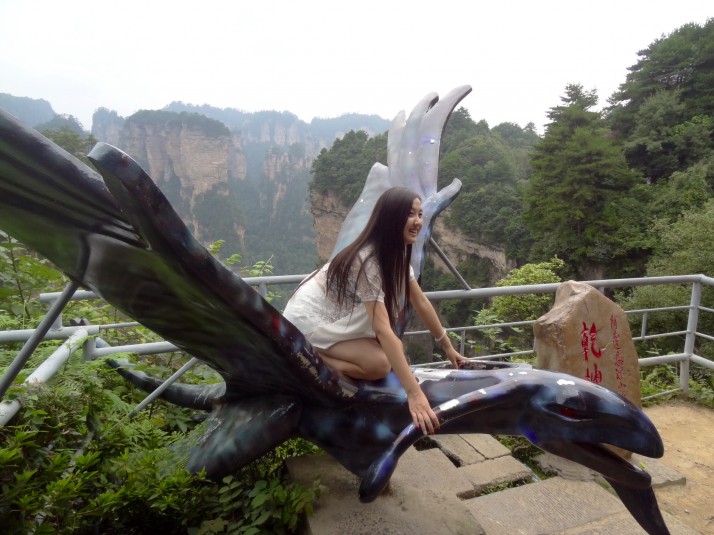 Naturally the viewing point in front of the ‘Avatar Hallelujah Mountain’ has a Mountain Banshee character model that you can pose with for a photograph!
Naturally the viewing point in front of the ‘Avatar Hallelujah Mountain’ has a Mountain Banshee character model that you can pose with for a photograph!
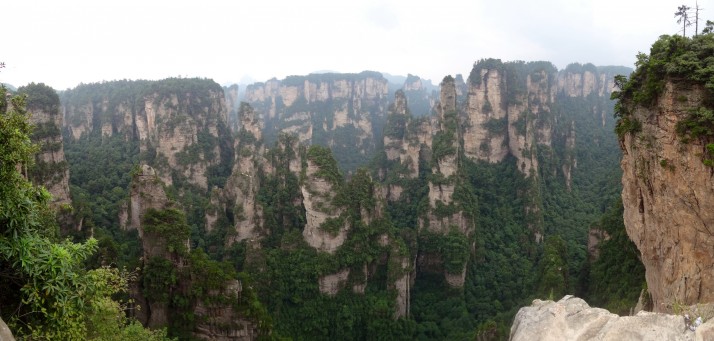 Our final panoramic view of the Yuanjiajie trail
Our final panoramic view of the Yuanjiajie trail
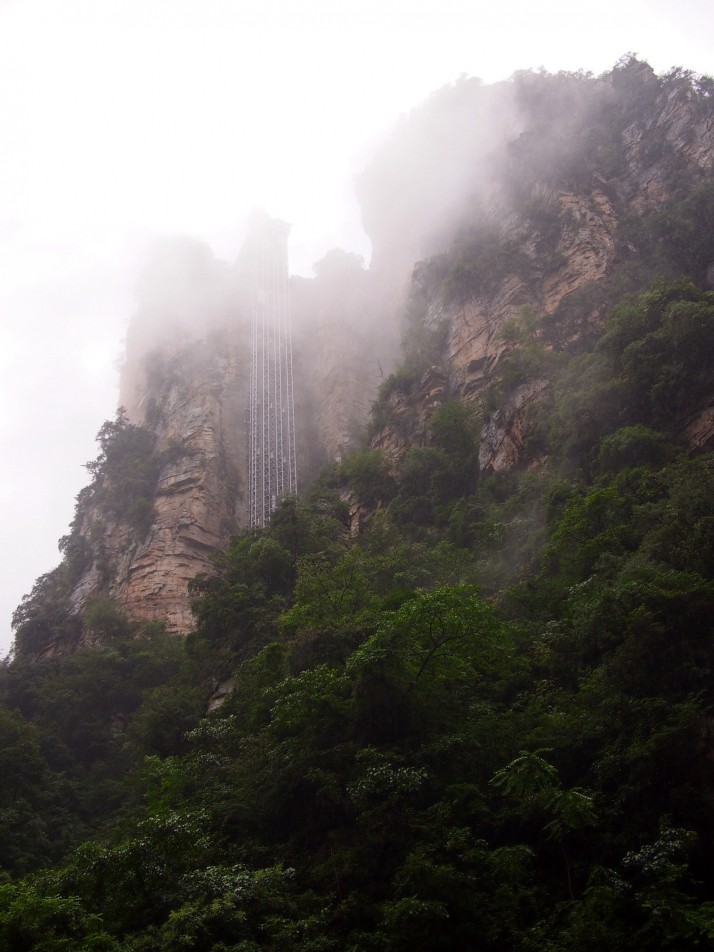 We arrived at Bailong Elevator just as it started to rain heavily which produced some atmospheric swirling clouds around it. The elevator itself is 330m high and attached to the side of the cliff. The walls of the elevator car are made of glass for vertiginous views as you descend!
We arrived at Bailong Elevator just as it started to rain heavily which produced some atmospheric swirling clouds around it. The elevator itself is 330m high and attached to the side of the cliff. The walls of the elevator car are made of glass for vertiginous views as you descend!
Despite the high costs for park entrance fees and cable car tickets we thought that Zhangjiajie National Park was worth every penny. We had a tiring but unforgettable three days.

 two year trip
two year trip